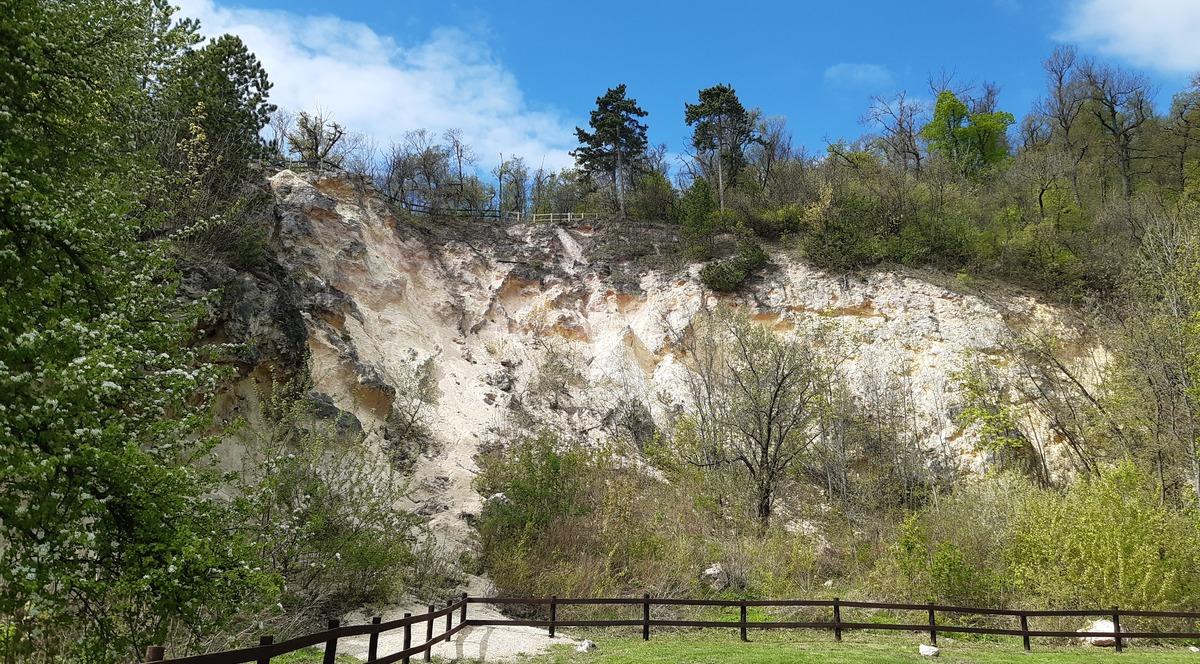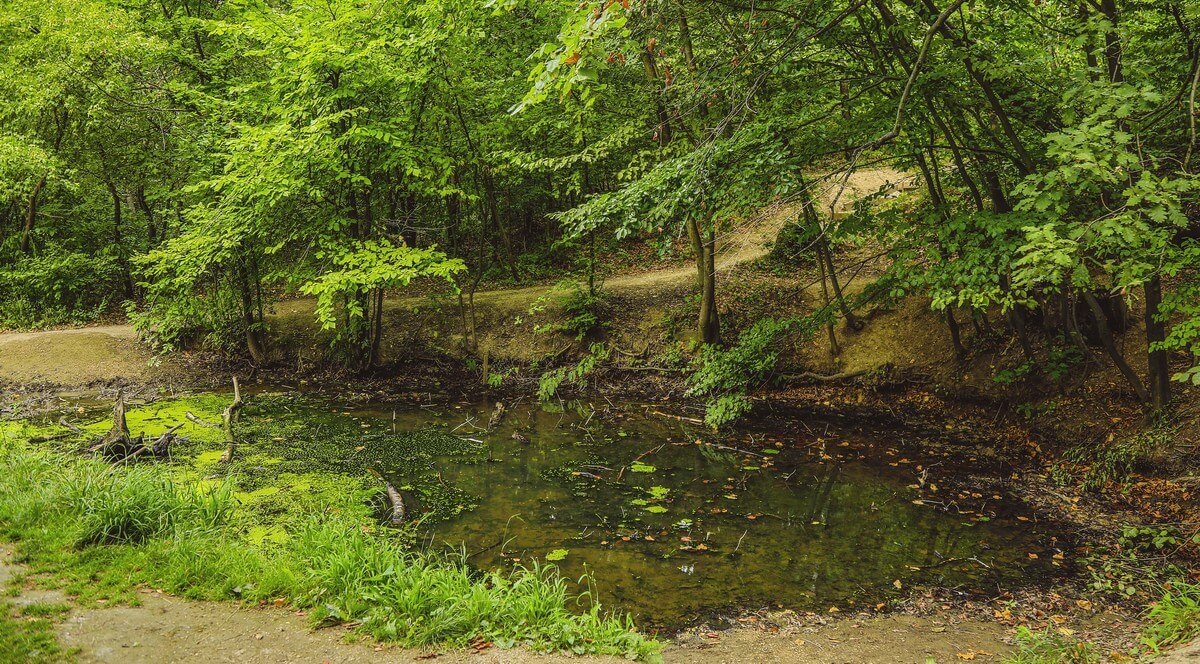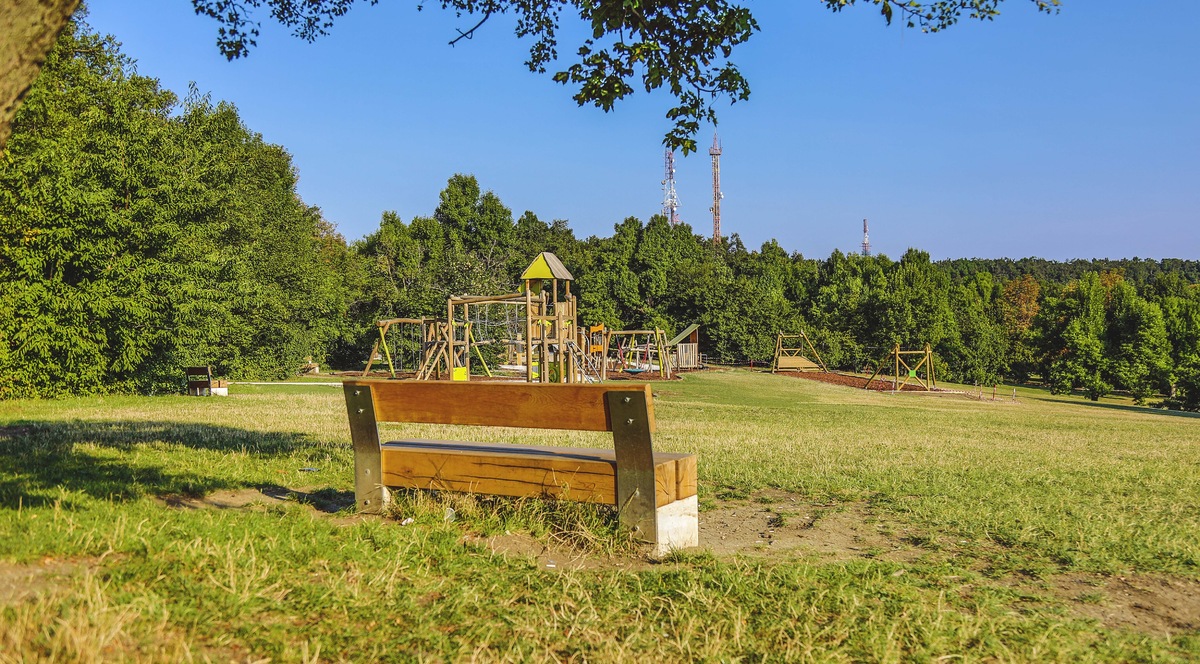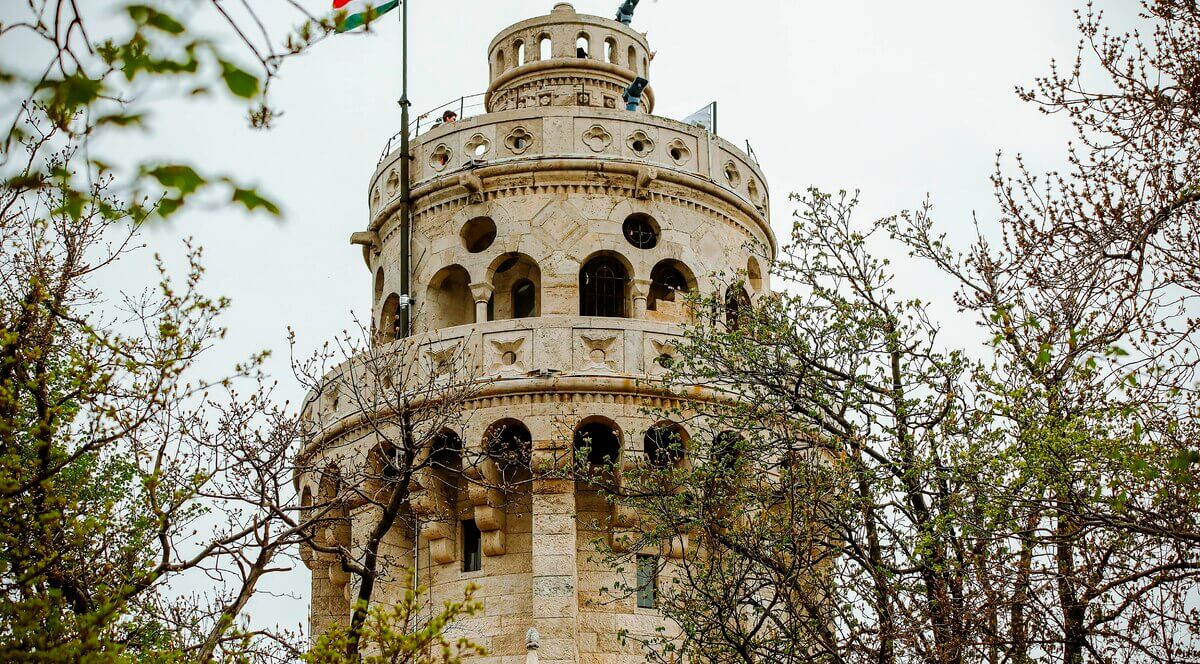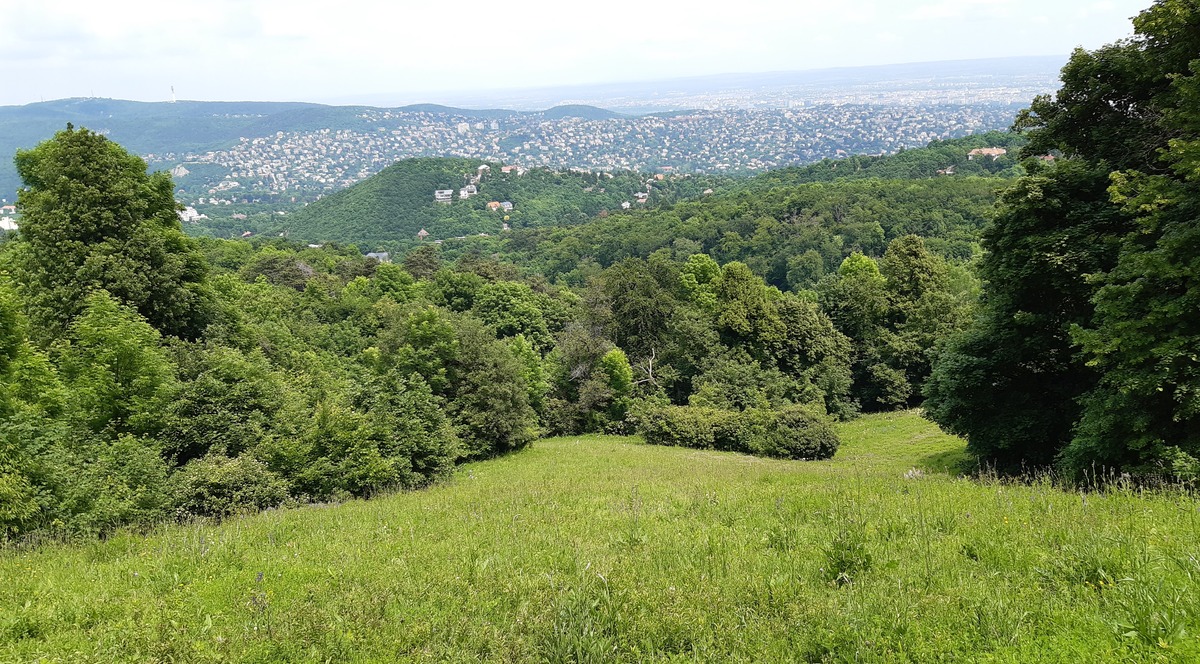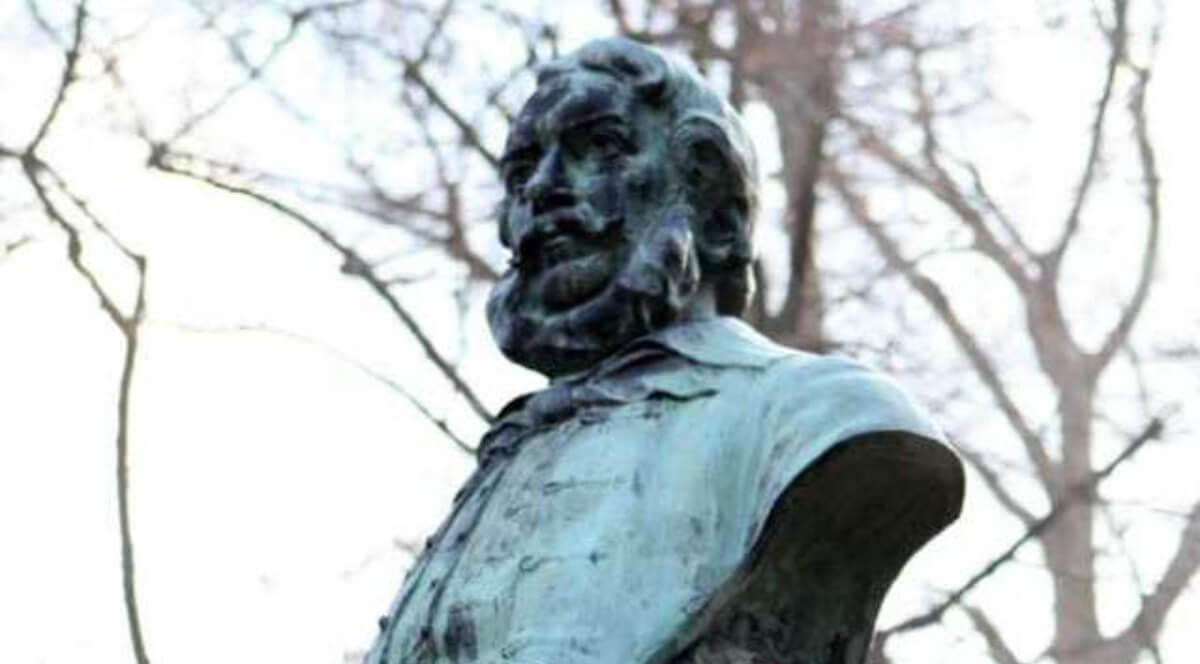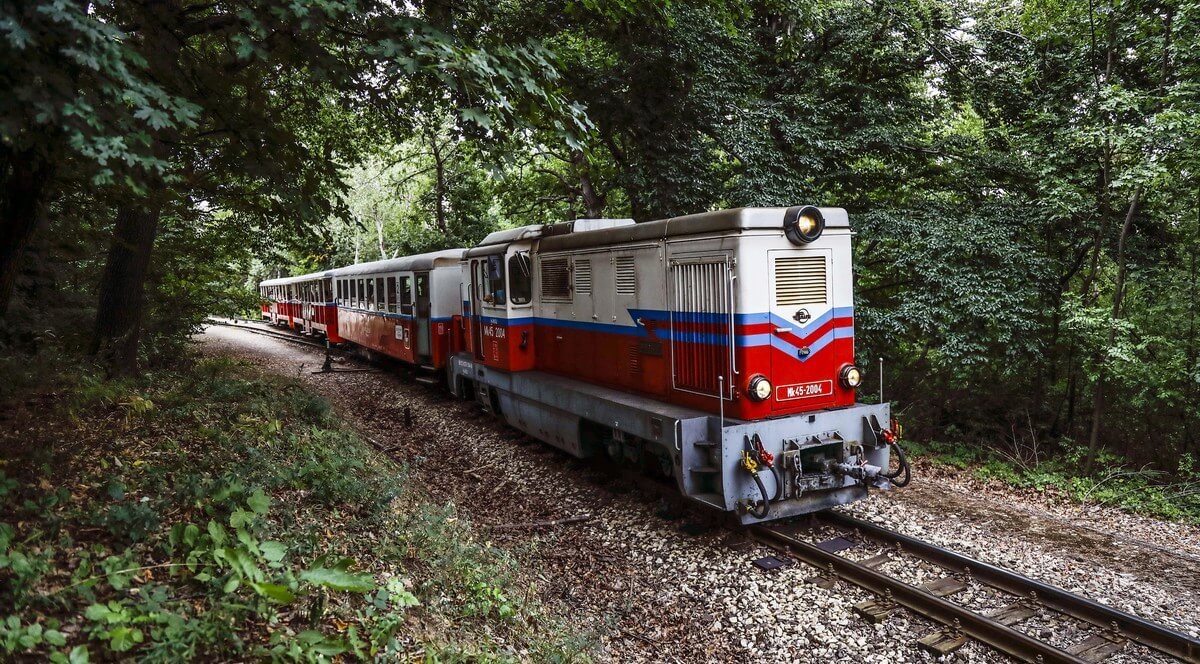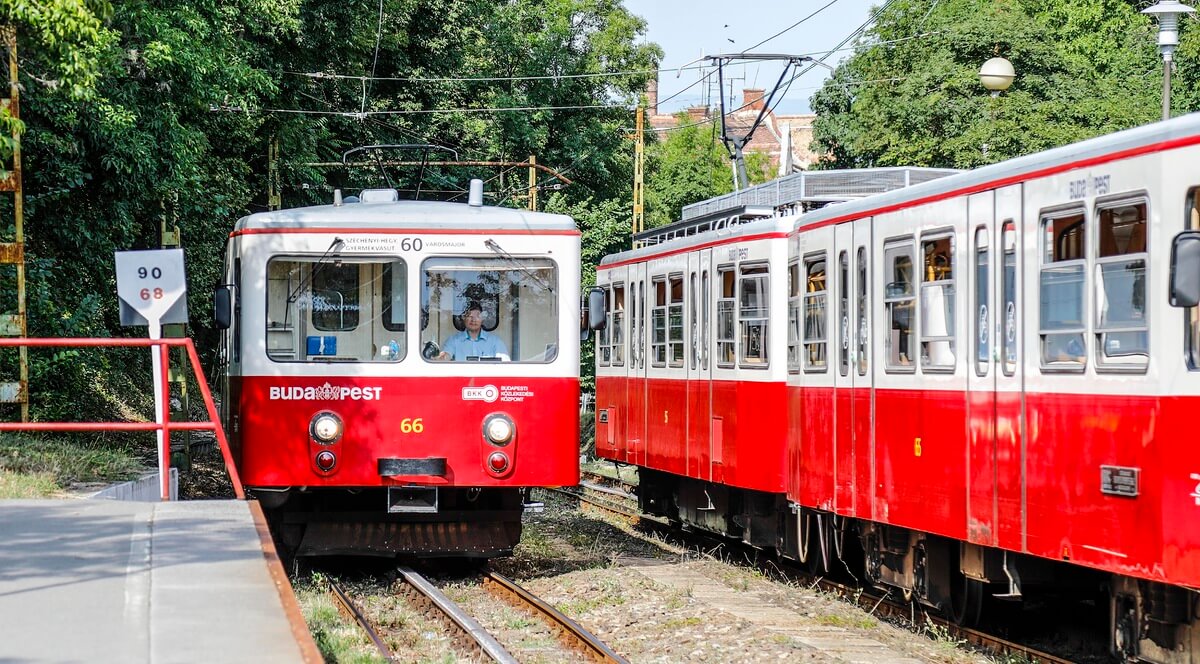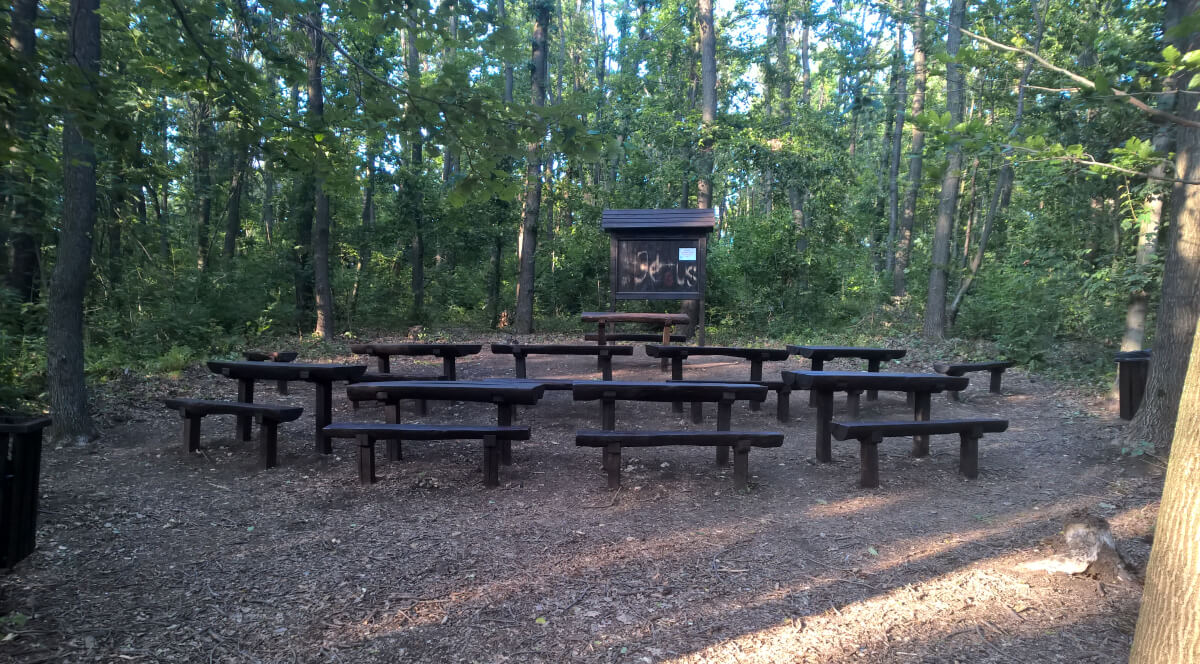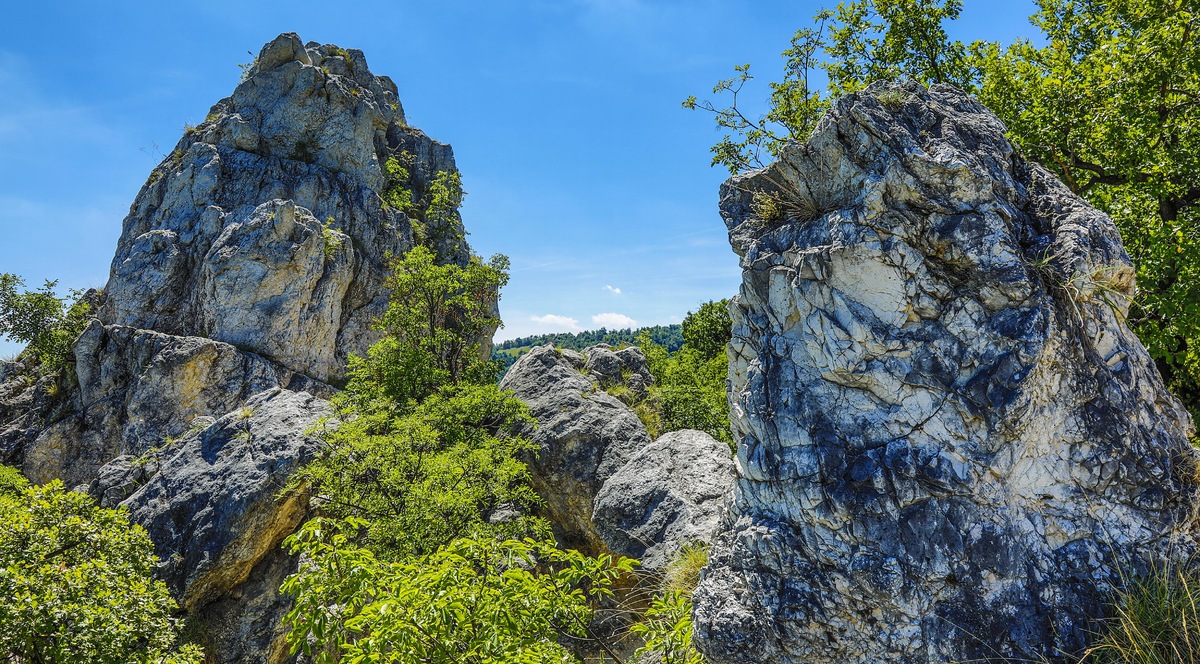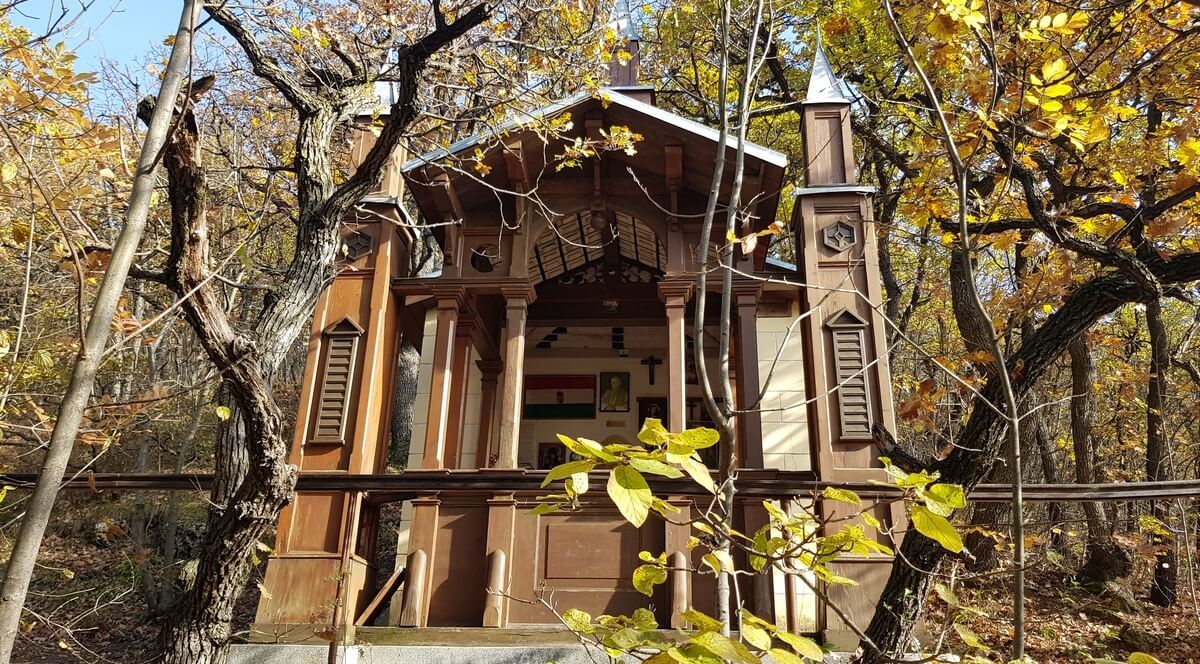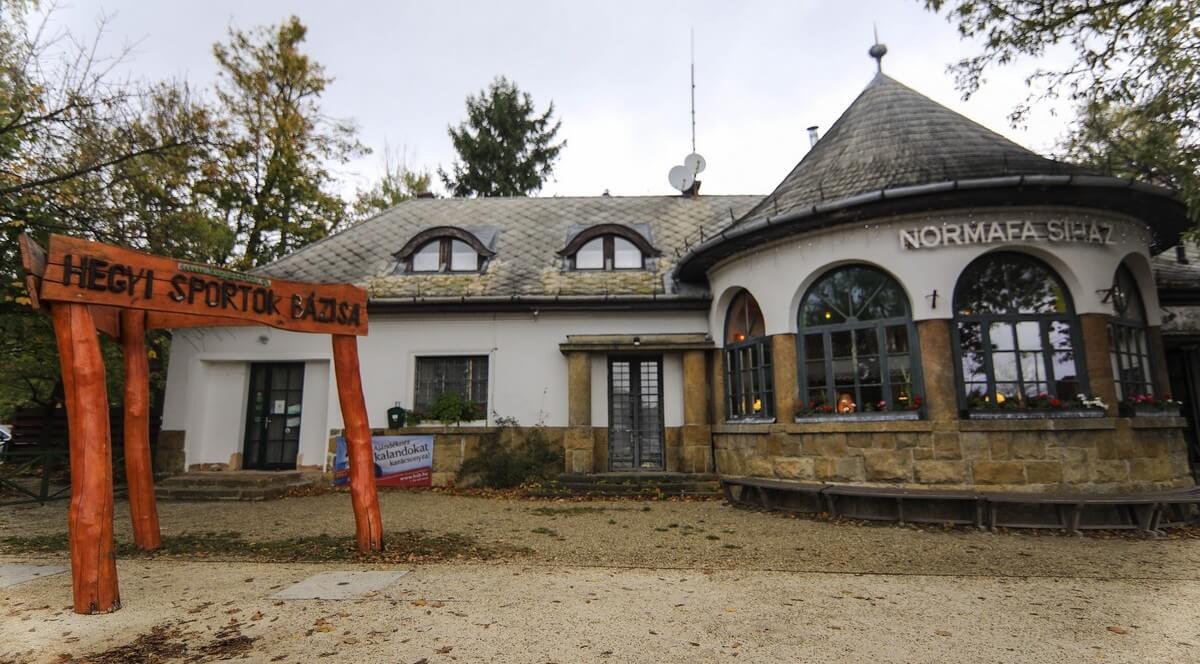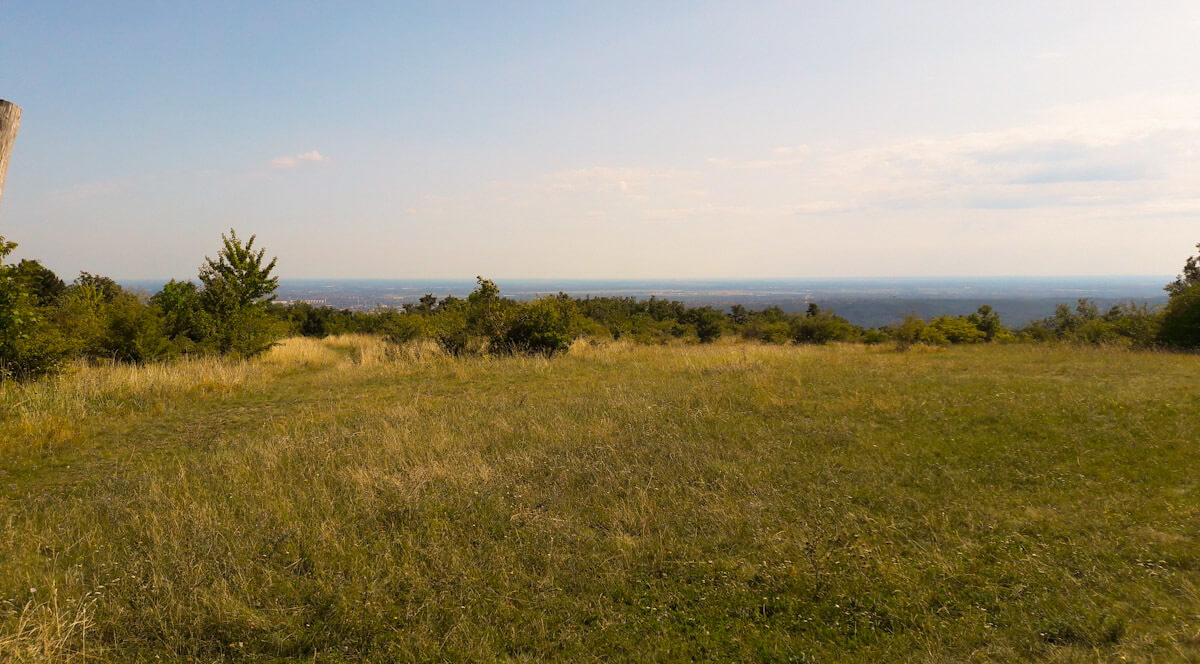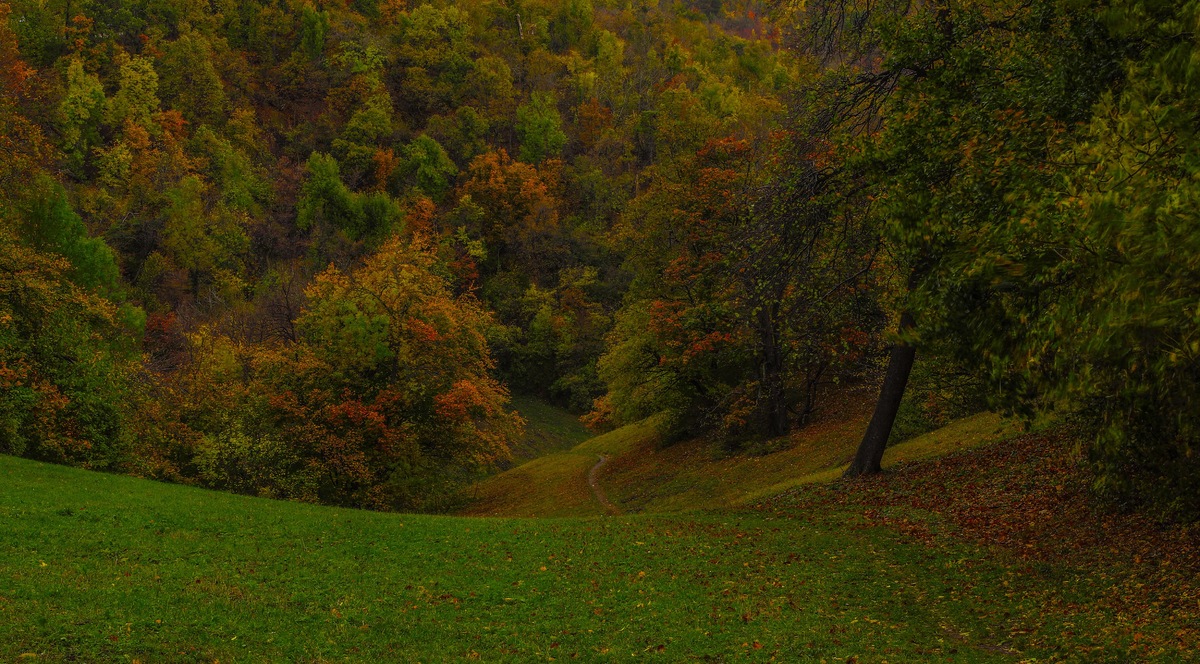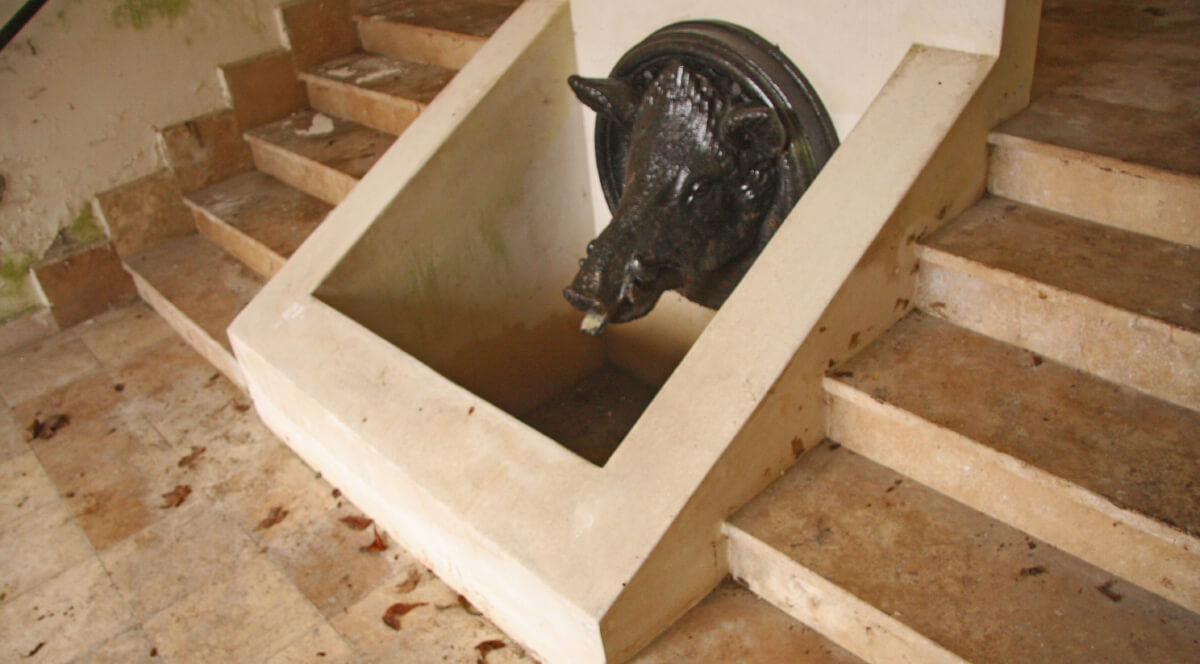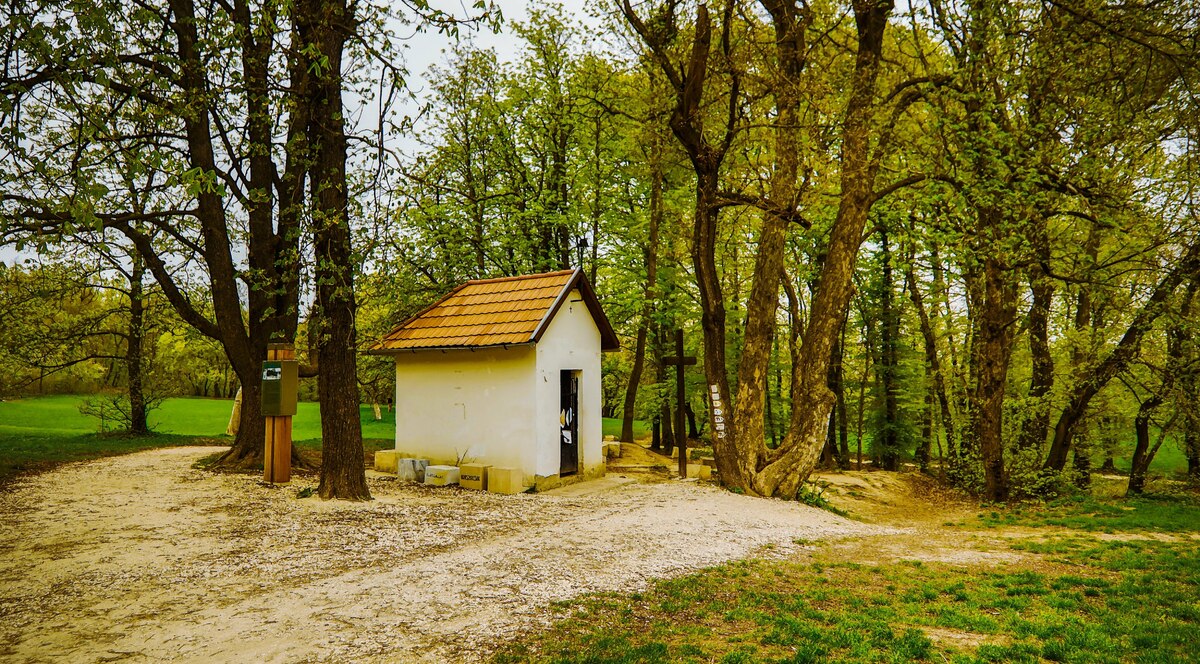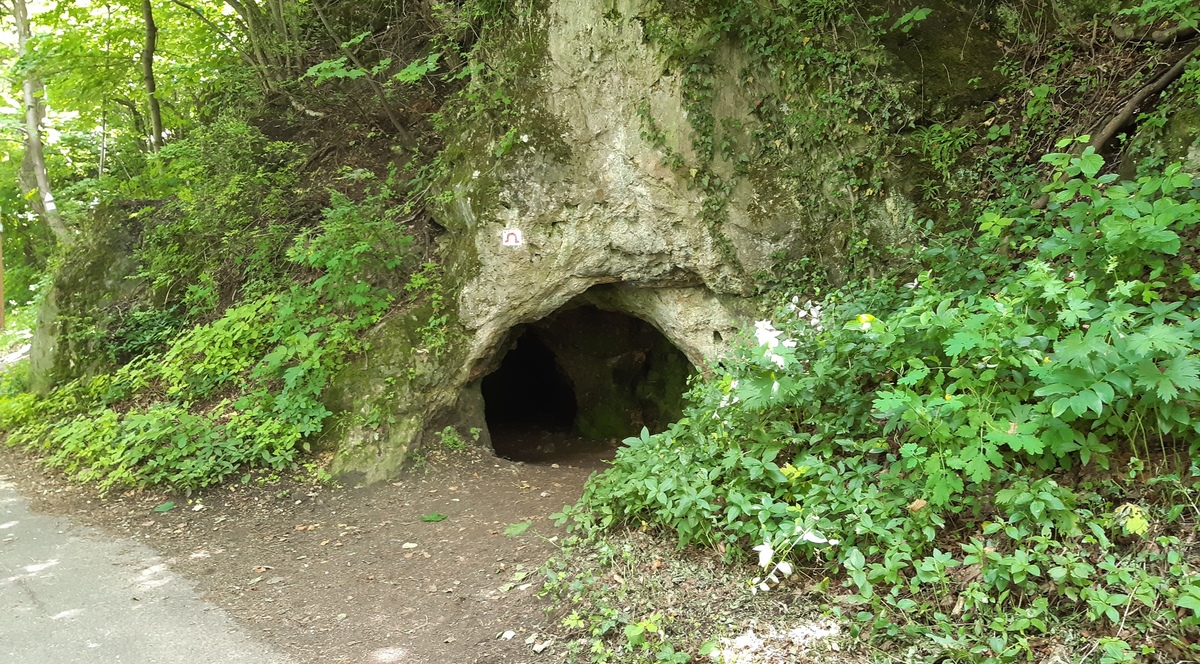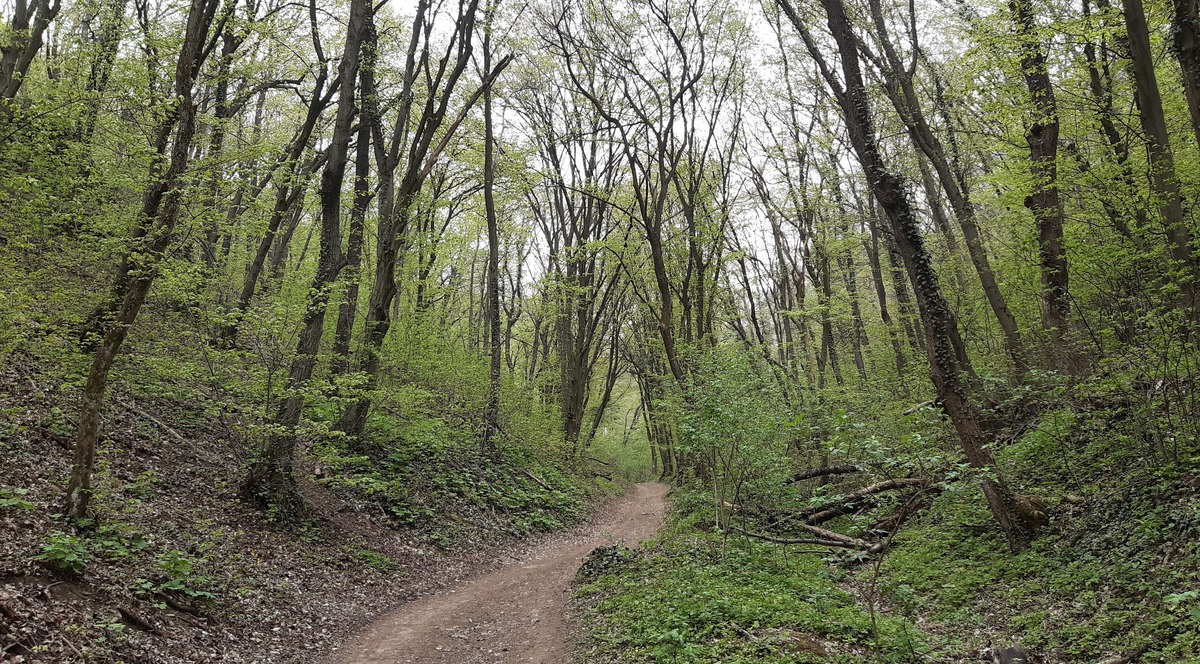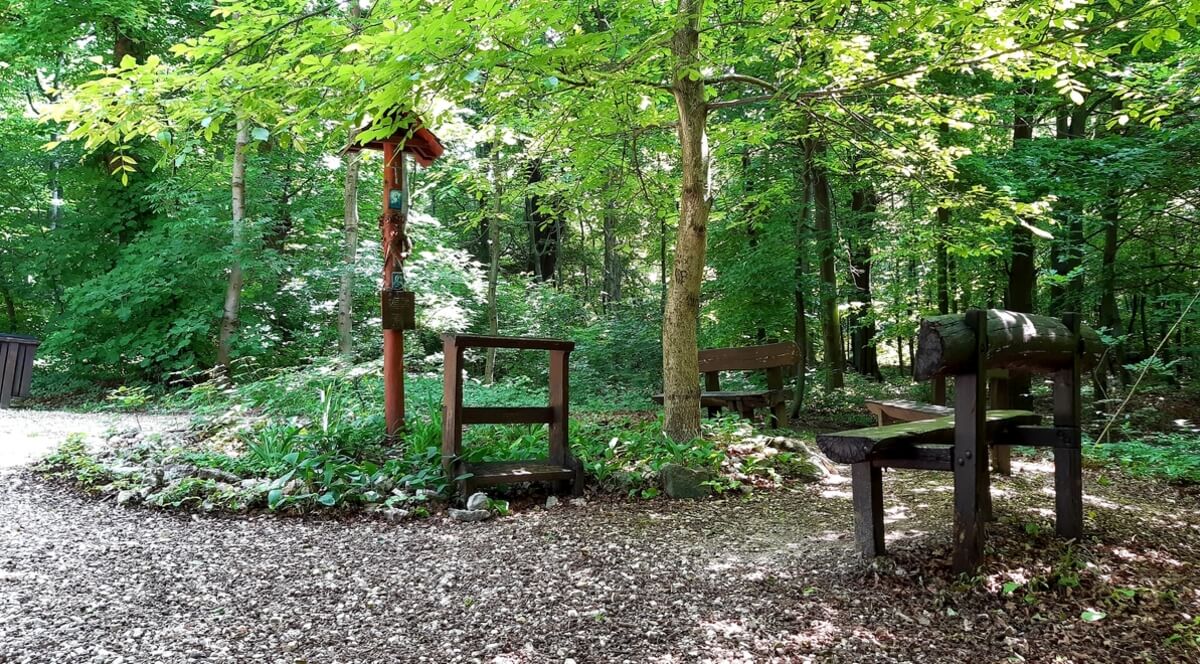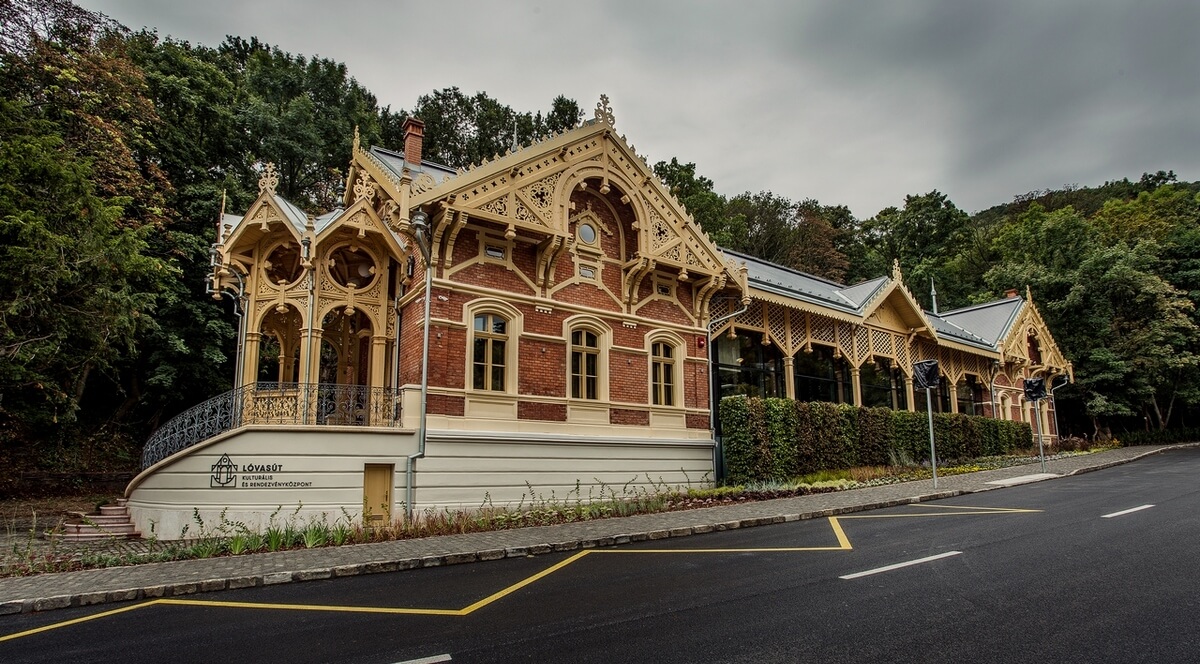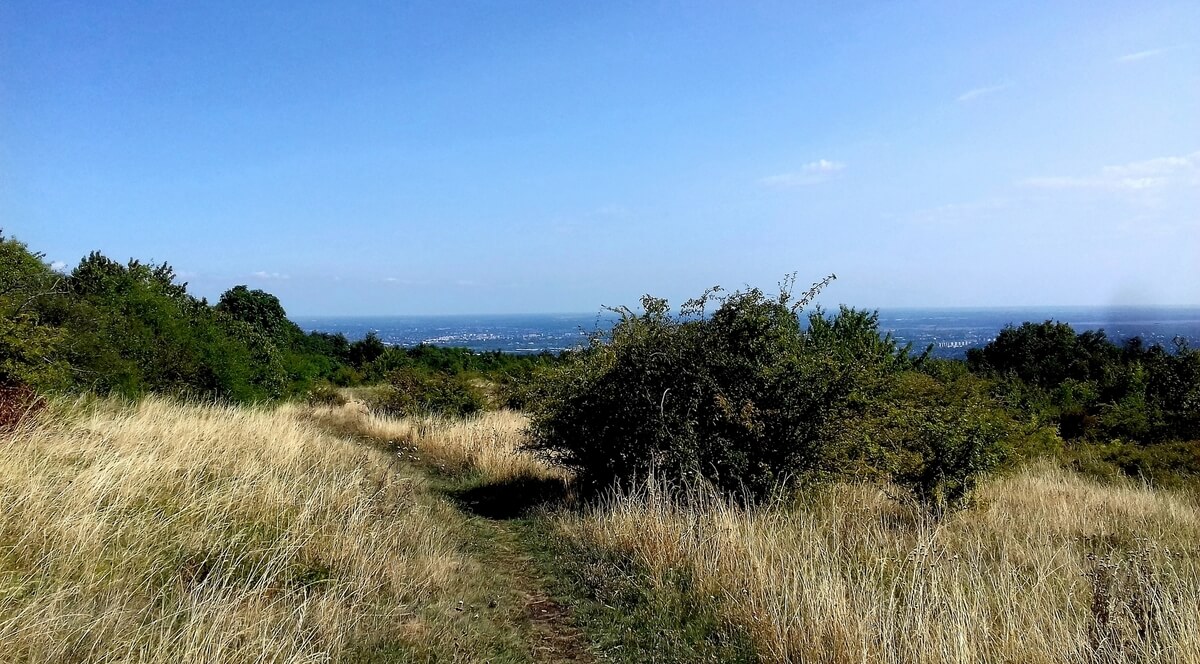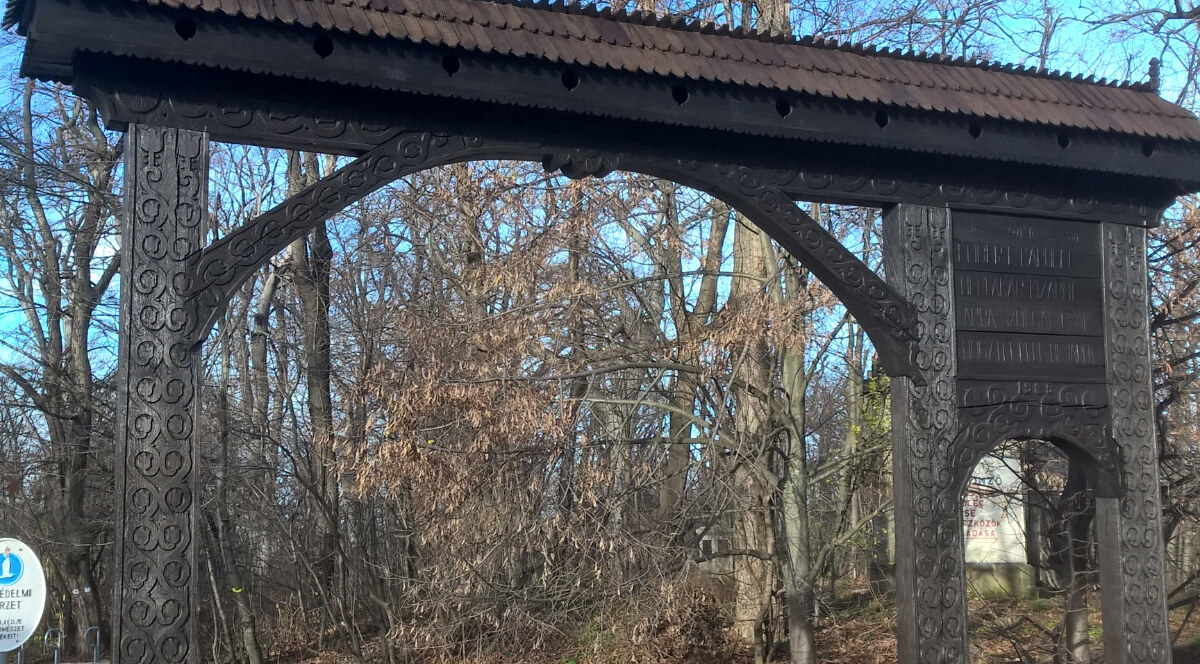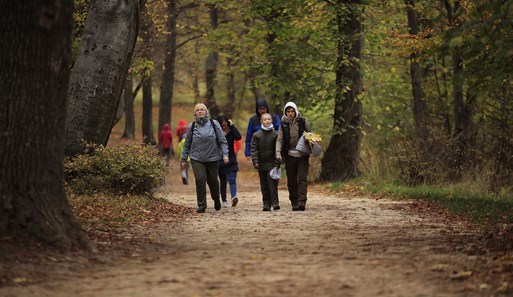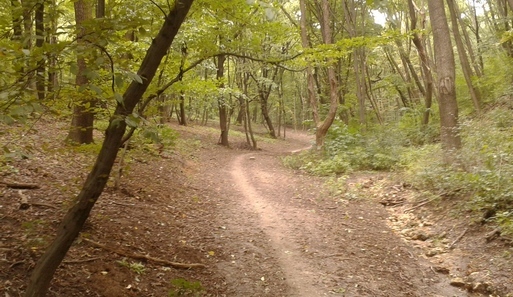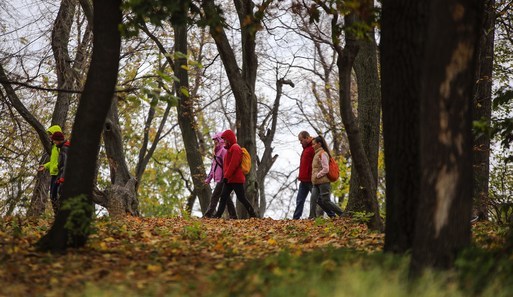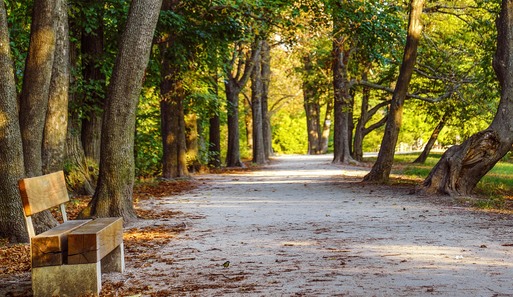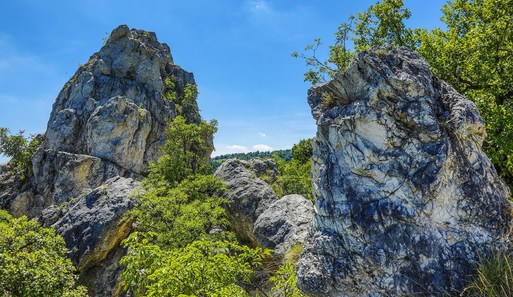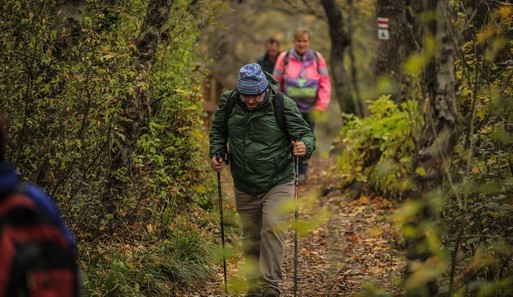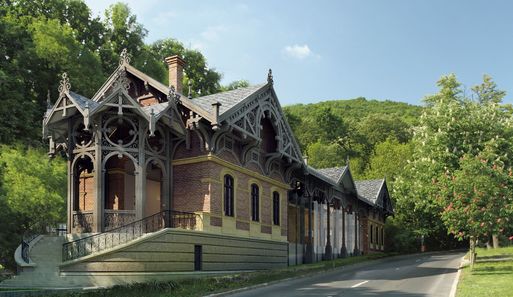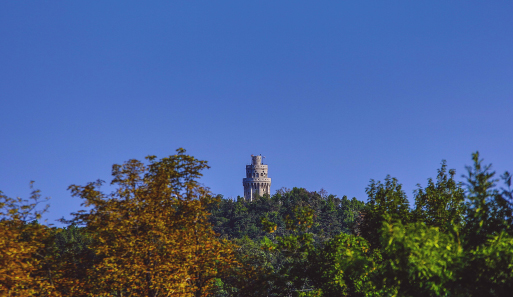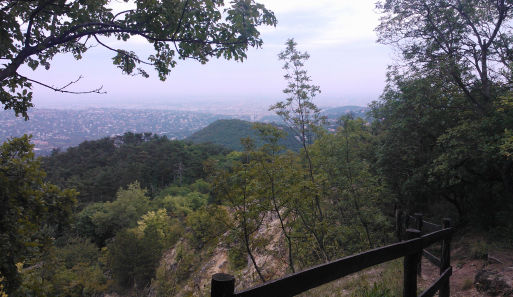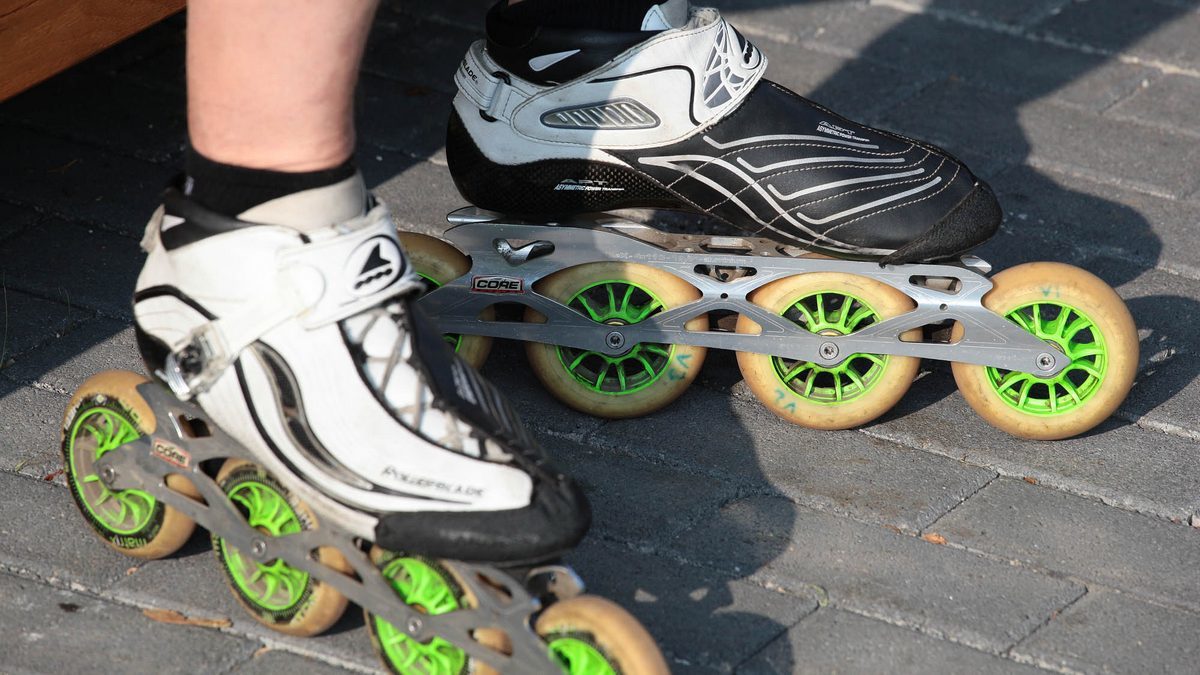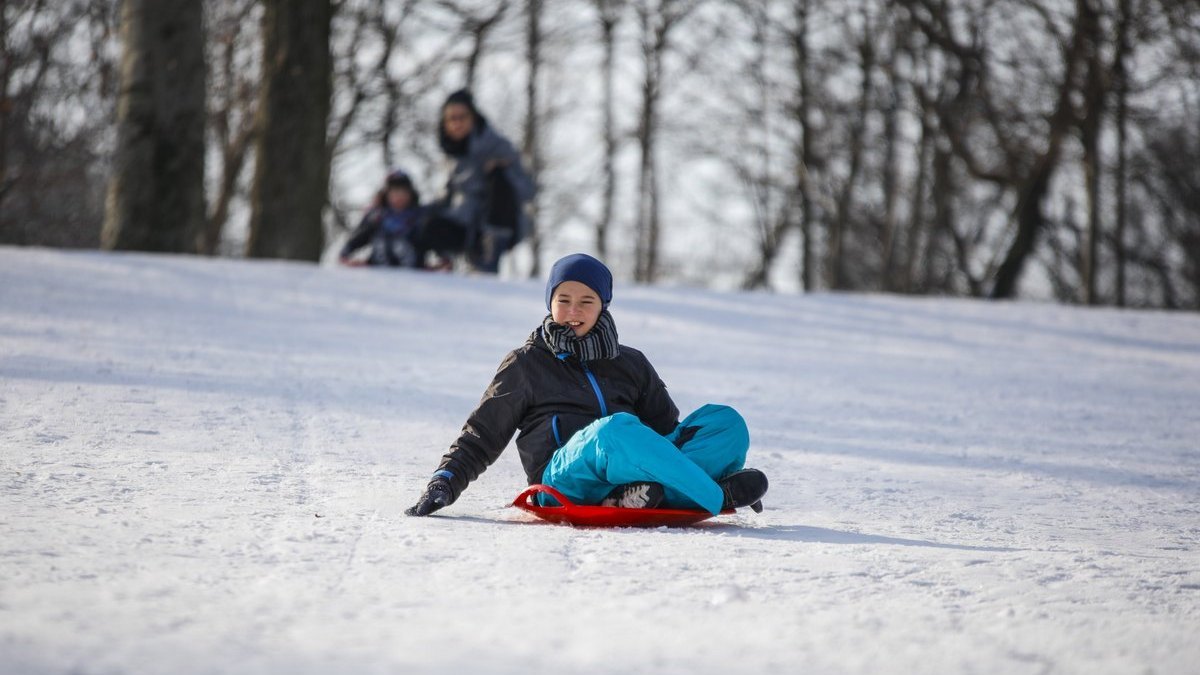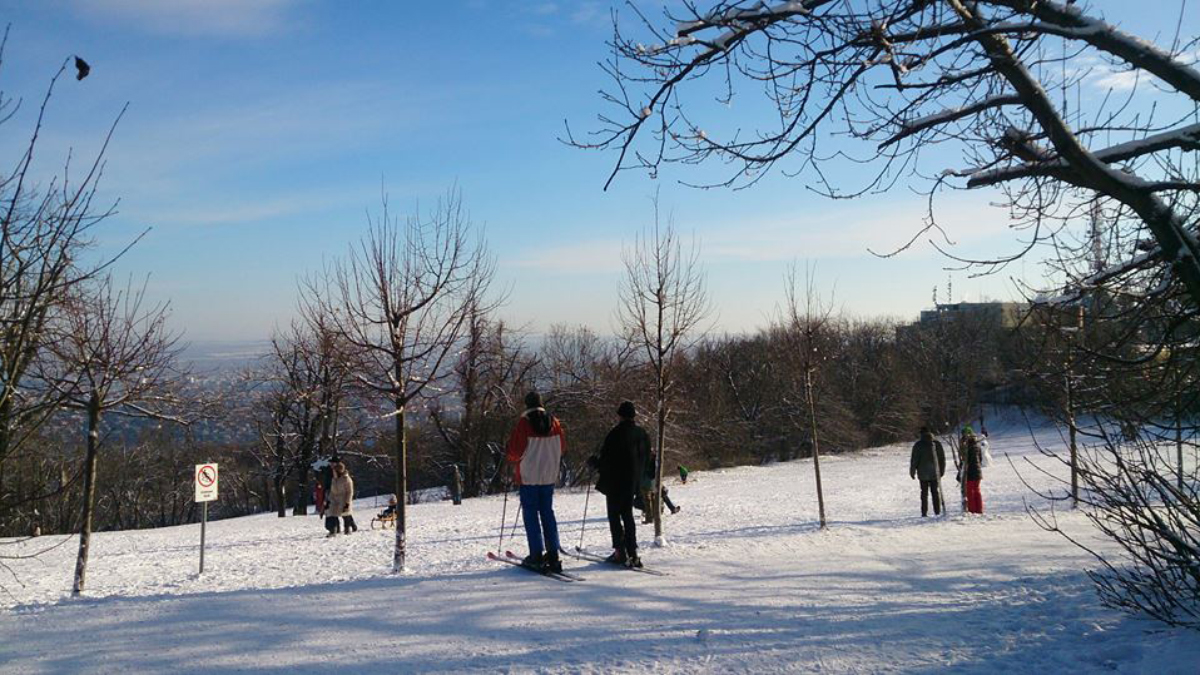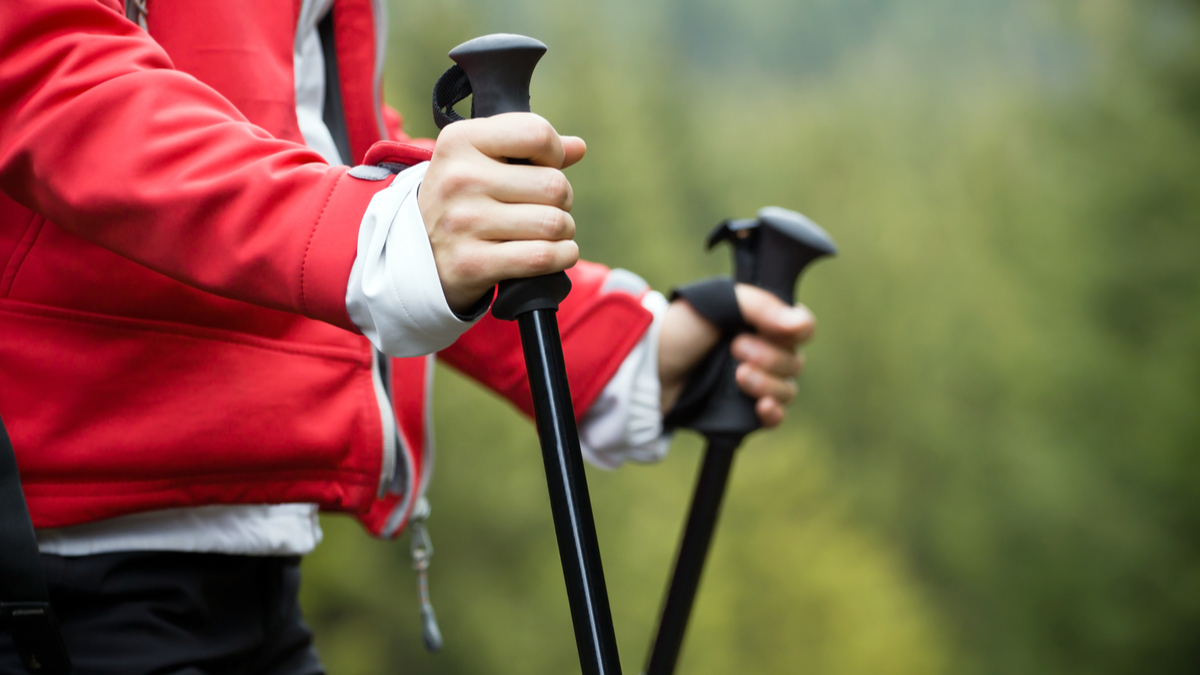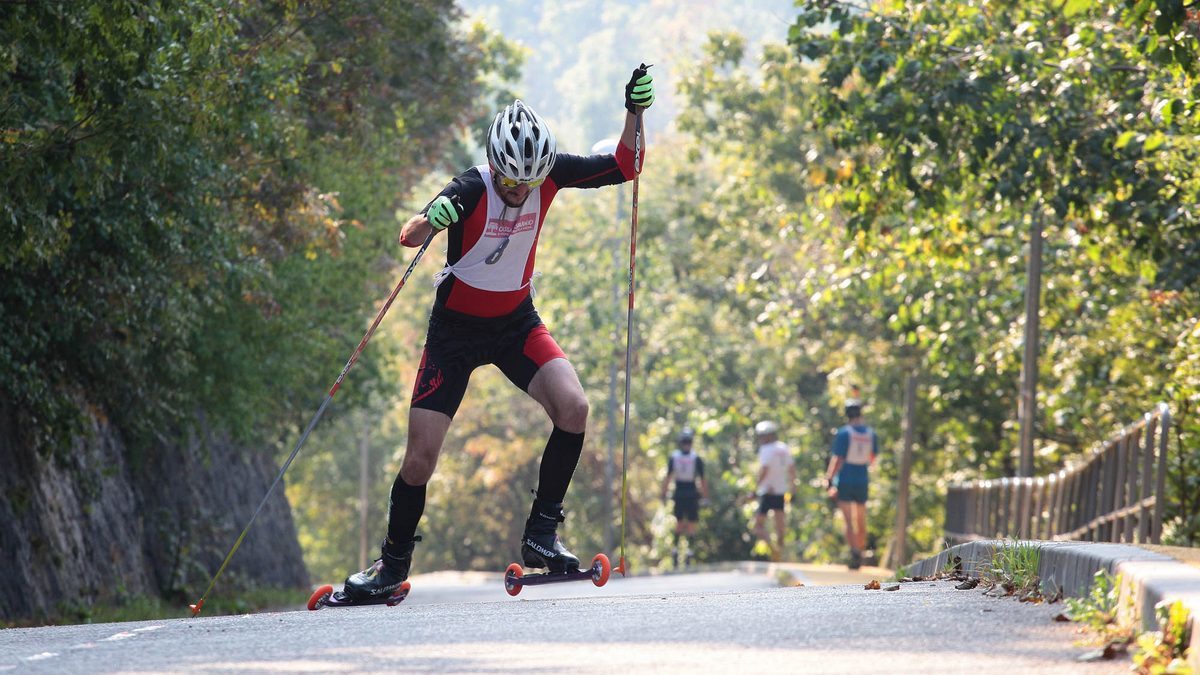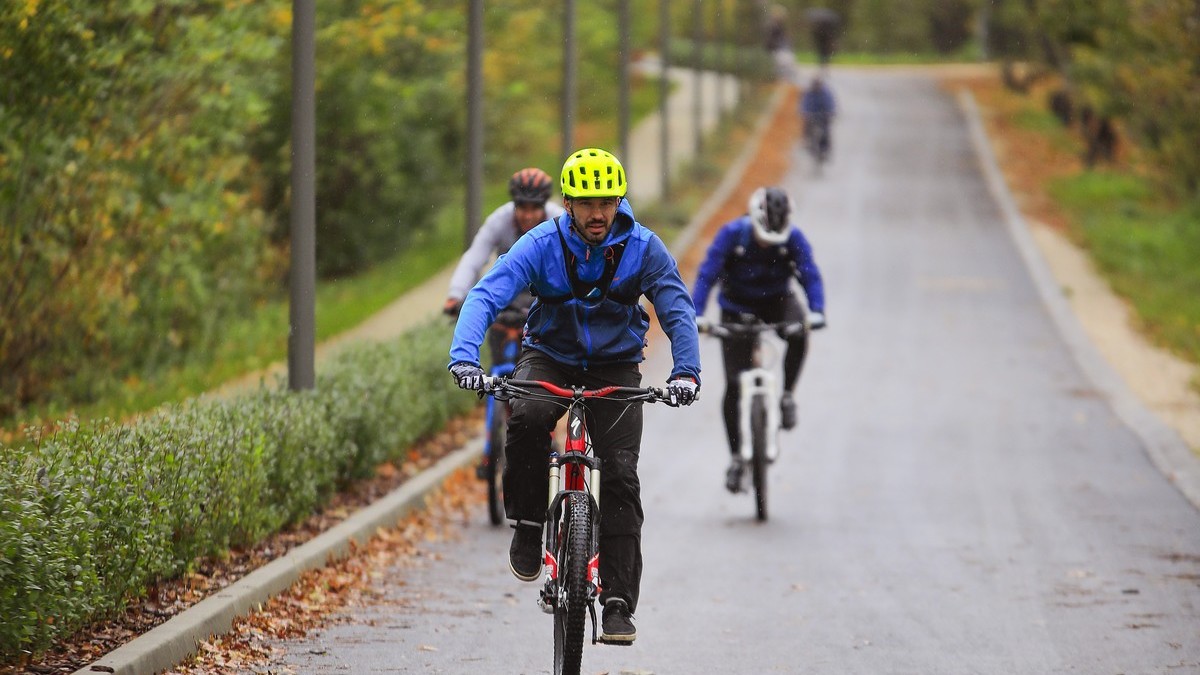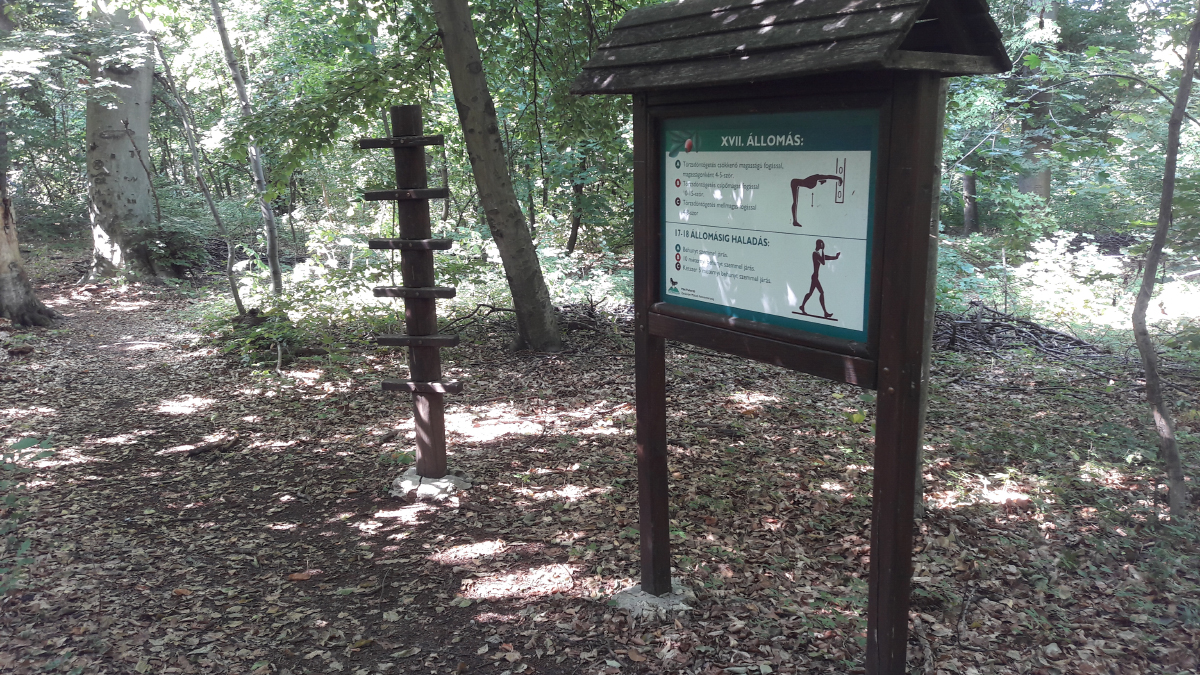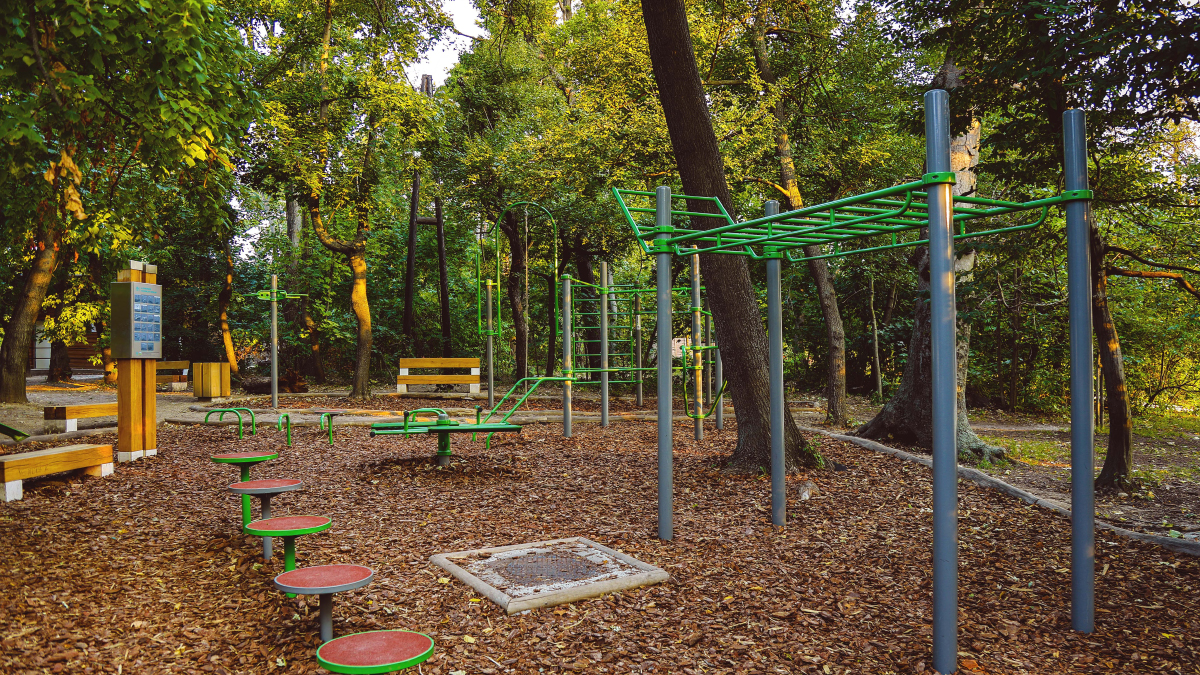The first ski jump in Budapest was inaugurated in the ‘Hungarian Greenland’.
11:00 am, 31st December 2019.
Ski jumping is not among the most well-known Hungarian sports. Few people know that the first ski jumping contest ever held in Hungary was in Normafa in 1909. However, it would be another ten years before a ski jumping ramp would be built in Normafa in 1919. Interest grew around this sport throughout the 1920s and 1930s. World War Two interrupted this trend, but the sport survived the storm. However, this local sport, which deserved its fame, finally vanished from Budapest in the 1990s.
According to archaeological evidence, prototypes of modern-day skis were used in northern Eurasia three to four thousand years ago, but only as mode of transport. Ski jumping is a much more recent sport which probably originated in the Telemark highlands of Norway, where in 1879 the first public competition was organized.
Skiing as a sport in Hungary first appeared in Buda on 4 December 1892. On this day Mihály Bély and Károly Demény held the first exhibition in Vérmező Park, from where they and a crowd of interested people marched up the hill Kissvábhegy in order to ski back down into town on the slope alongside the Cogwheel Railway. Two years later they established the first Hungarian skiing association.
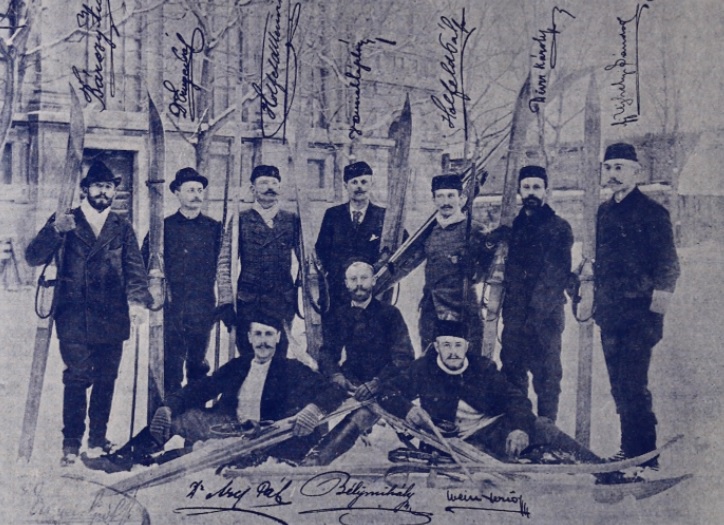
The first Hungarian skiing association in 1895 (Photo: Hegyvidék Local History Collection)
The centre of Hungarian skiing was initially in Budapest. In 1908 the Hungarian Skiing Club was established. Together with the Hungarian Tourist Association, it organized the first domestic skiing competition in Normafa on 28 February 1909. It included cross-country skiing, downhill skiing and ski jumping.
Interestingly, the competition had ski jumping without any constructed ski jump – a small hill had been shaped into a small ramp. The newspaper Nemzeti Sport (National Sport) commented on the success of the competition on 4 December 1909 and reported that construction of a ski jumping ramp was planned.
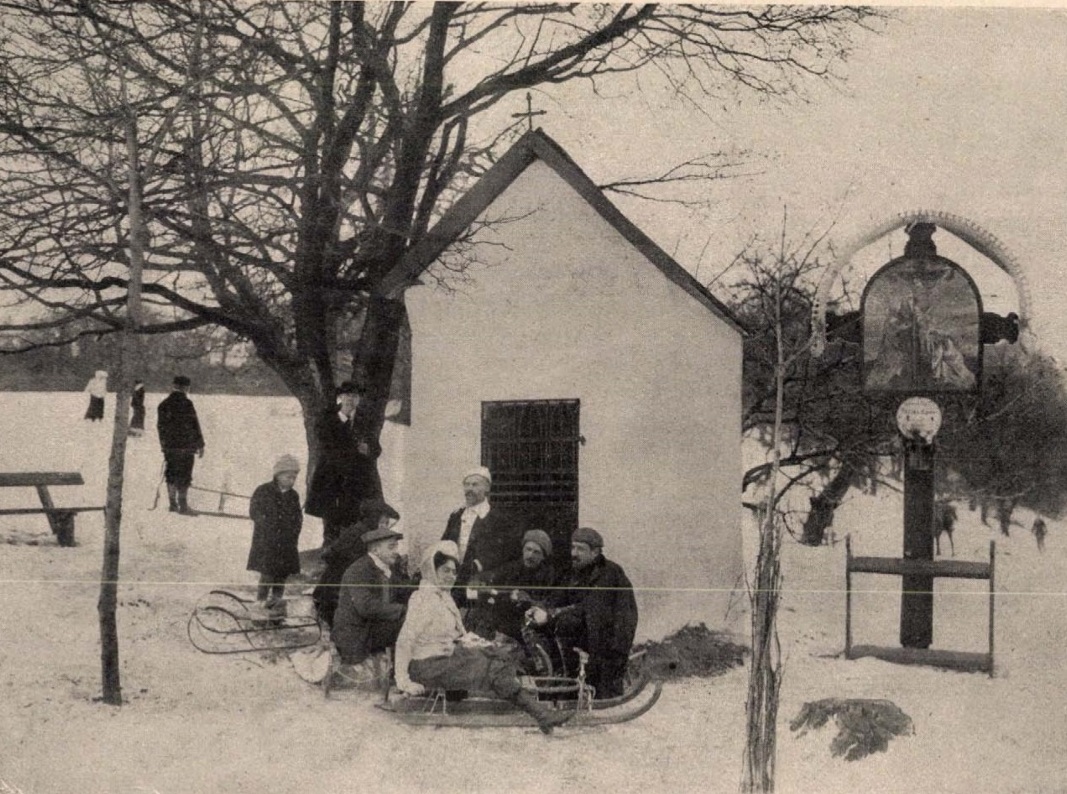
Winter sports at St. Anna’s Chapel in Zugliget (Photo: Hegyvidék Local History Collection)
However, construction could not happen due to lack of funds. The Hungarian Skiing Association came into being on 15 June 1913, and by the start of World War One, in 1914, it had completed the promised development. During the war, competitions were suspended, and many fine athletes lost their lives on the battlefields. The treaty of Trianon, signed in 1920, redrew Hungary’s borders, making it into a much smaller country. This put Hungarian skiing in a remarkably difficult position.
In the first winter after the war, on 26 January 1919, the first Budapest ski jump was opened. “The new ski jump was officially opened for use on this occasion by the Club that created it; we can state with satisfaction that the course will meet our modest needs” – reported the journal Turistaság és Alpinizmus (Hiking and Mountaineering) on 7 January 1919.
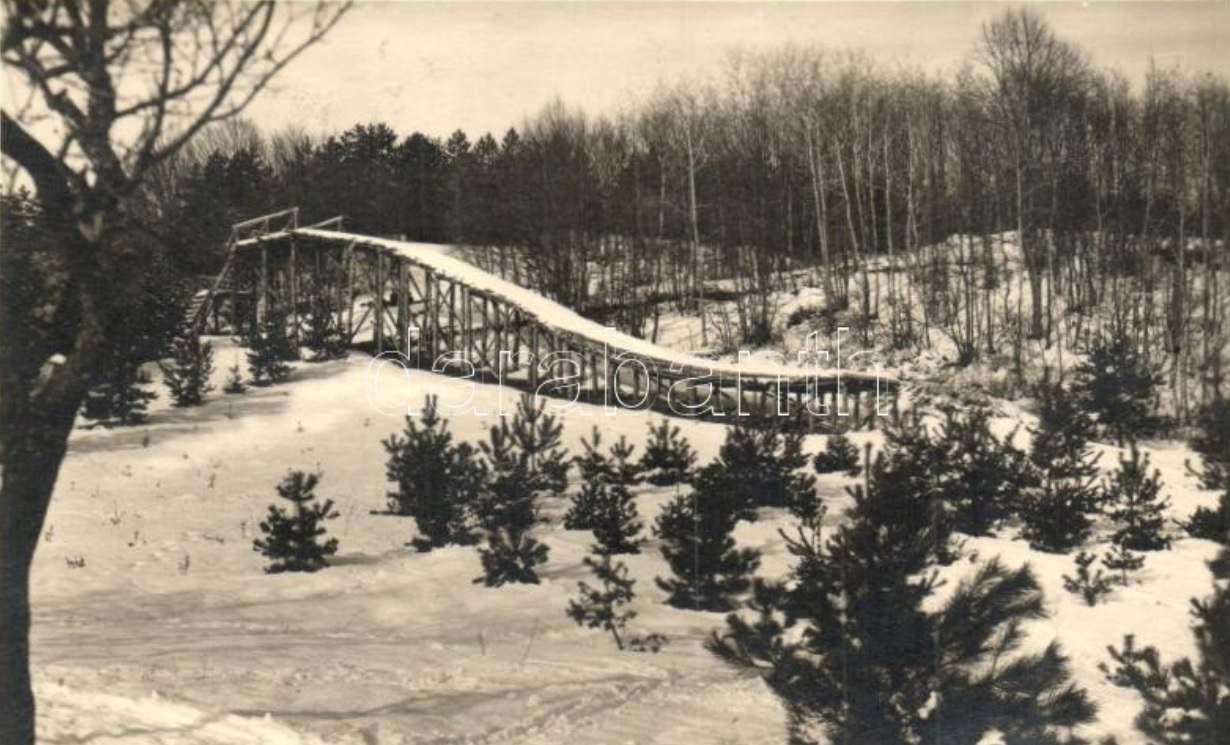
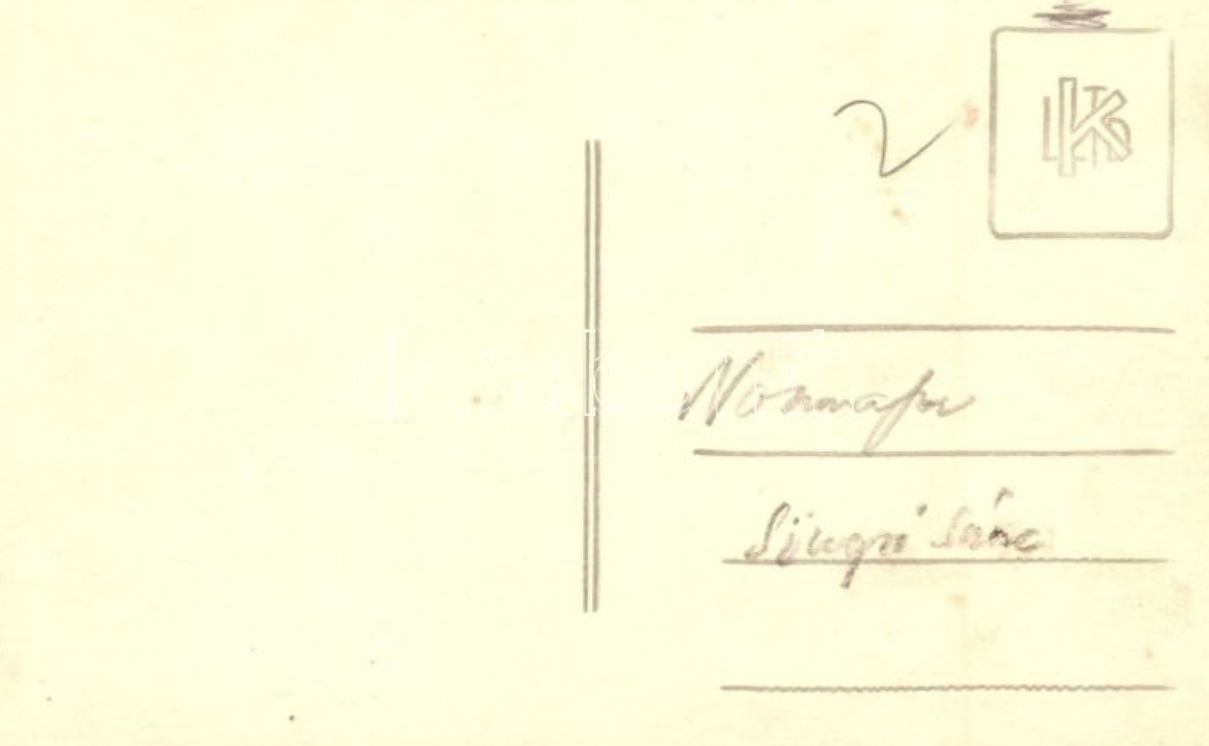
Presumably, this postcard shows the first wooden ski jump, erected in 1919. As there is no other picture of it, this is not certain, but the reverse of the postcard shows the words “Normafa, ski jump”. However, this could have been written at any time. (Photo: darabanth.com)
A year had not even gone by before the ski jump needed repairs because the extreme cold had damaged its structure. However, extensive renovation was not enough as the ski jump did not satisfy official requirements, so construction of another ski jump was planned.
The newspaper Nemzeti Sport (National Sport) appealed to the public for help in making the plans a reality. “A call to all skiers! The Hungarian Skiing Association will have a modern ski jump built on the fields of Virányos between St. Anna’s Chapel and János-hegy, so they call upon members of all clubs to promote the sport of skiing with the labour of their own hands, and they hope as many as possible will help with the work.” – 4 November 1922.
The first competition ski jump was completed by the Hungarian Skiing Association on the tenth anniversary of its foundation in December 1923 in Normafa, but it was not inaugurated until 5 and 6 January 1924. The newspaper Uj Nemzedék (New Generation) reported that “The Sparta English-Hungarian Sport Development company has built a new 30-metre long, 9-metre high and 3-metre wide ski jump.”
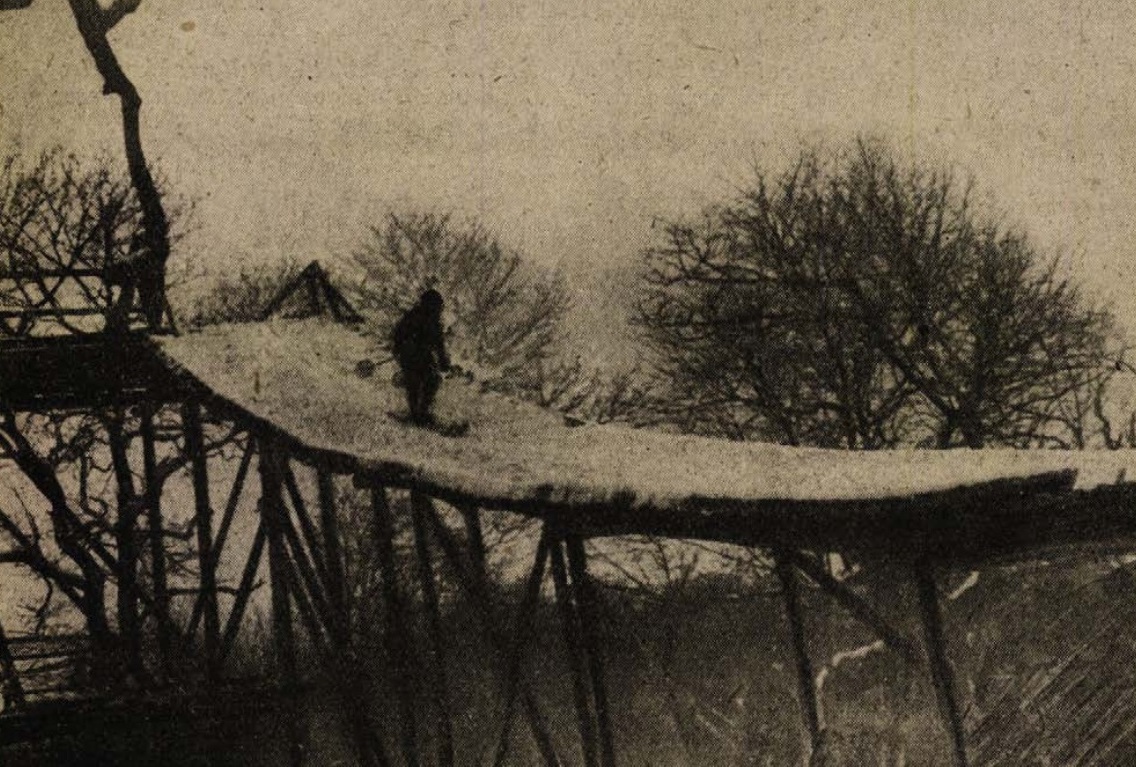
Aladár Haberl, skiing champion, on the ski jump (Photo: Színházi Élet, 1924; vol. 2, p. 94)
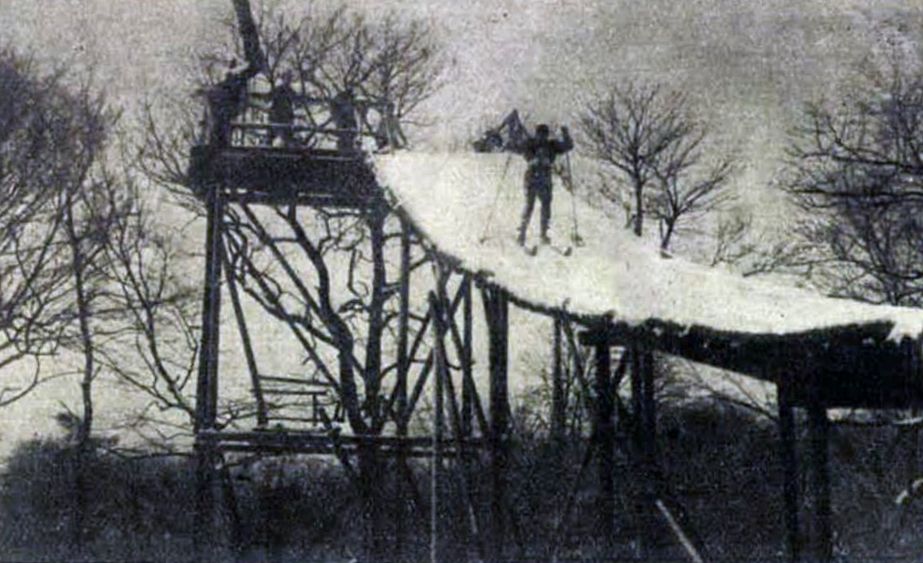
One of the first jumps on the new ski jump (Photo: Hegyvidék Local History Collection
We know that fans of the new sport awaited the inauguration of the ski jump with great enthusiasm from the writer of an article in the second issue of Színházi Élet (Theatre Life) in 1924, in which he stated “For years I had never awoken so early. I dressed quickly because that day was going to be a historic day for sport. The new ski jump would be inaugurated. I grabbed my skis and backpack and with my hand on my flask of pálinka I headed for Buda. After half an hour I had hiked up to Normafa, where around a thousand skiing enthusiasts had gathered in fascination of the technical wonder of the ski jump. I recommend that sports fans pack their bags, because the ‘Hungarian Greenland’ is not just for the young, but also for those old dogs who are still hungry for sport!”
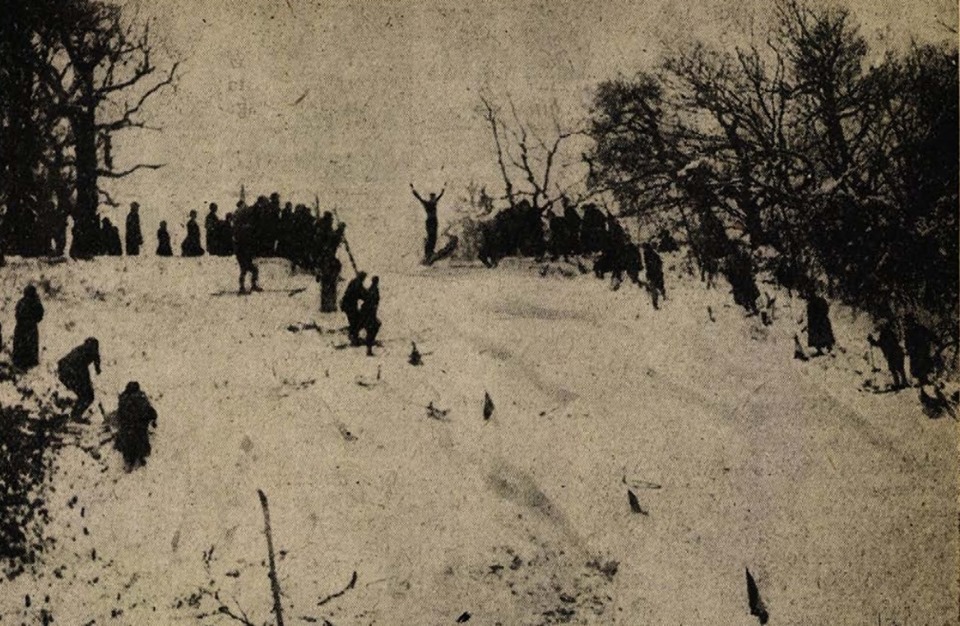
Béla Szepes’ winning jump at the inauguration of the new ski jump (Photo: Színházi Élet, 1924; vol. 2, p. 95)
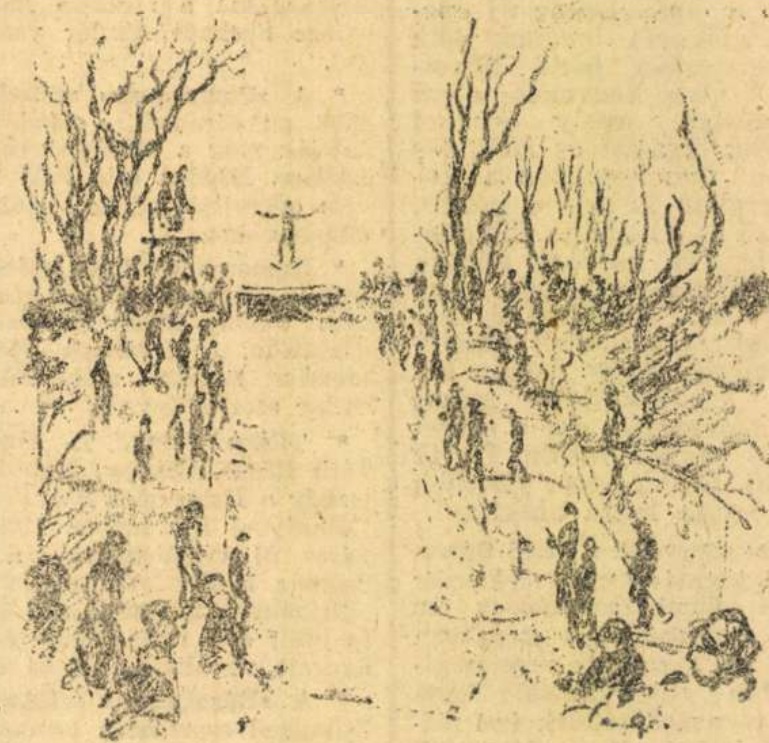
Ski jumping in Normafa (Illustration: Az Est, 15 January 1924)
It is important to note that the newspapers wrote about ski jumps in Svábhegy or here and there in Jánoshegy, and elsewhere one can read about a large ski jump in Virányos. These various reports refer to the same area of Svábhegy, stretching between Normafa and Jánoshegy. and any reference to a ski jump is made more difficult because it stood alongside Jánoshegyi Road which was then part of Virányos, thus strictly speaking every report gave an accurate description of the same ski jump.
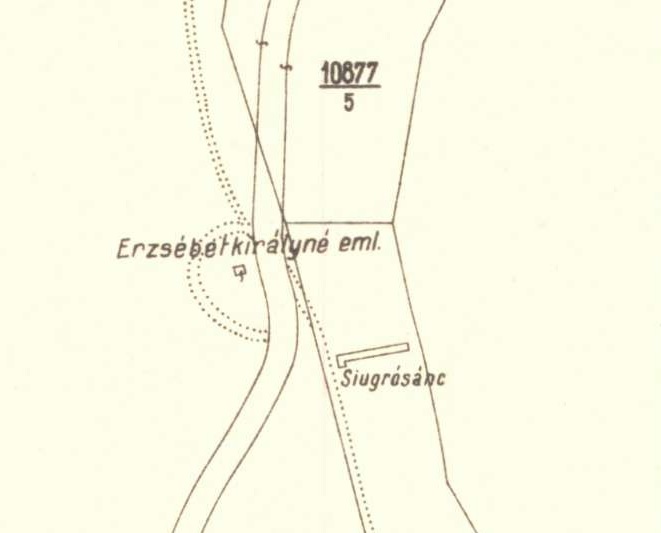
The location of the ski jump on Jánoshegyi Road between Normafa and Jánoshegy on a map from 1937 (Photo: Mapire – Historical Maps Online)
In spite of the great atmosphere at the inaugural competition, it turned out that the new ski jump needed improvement. In the following year, the Skiing Association transformed the ski jump so that it would be suitable for competitions.
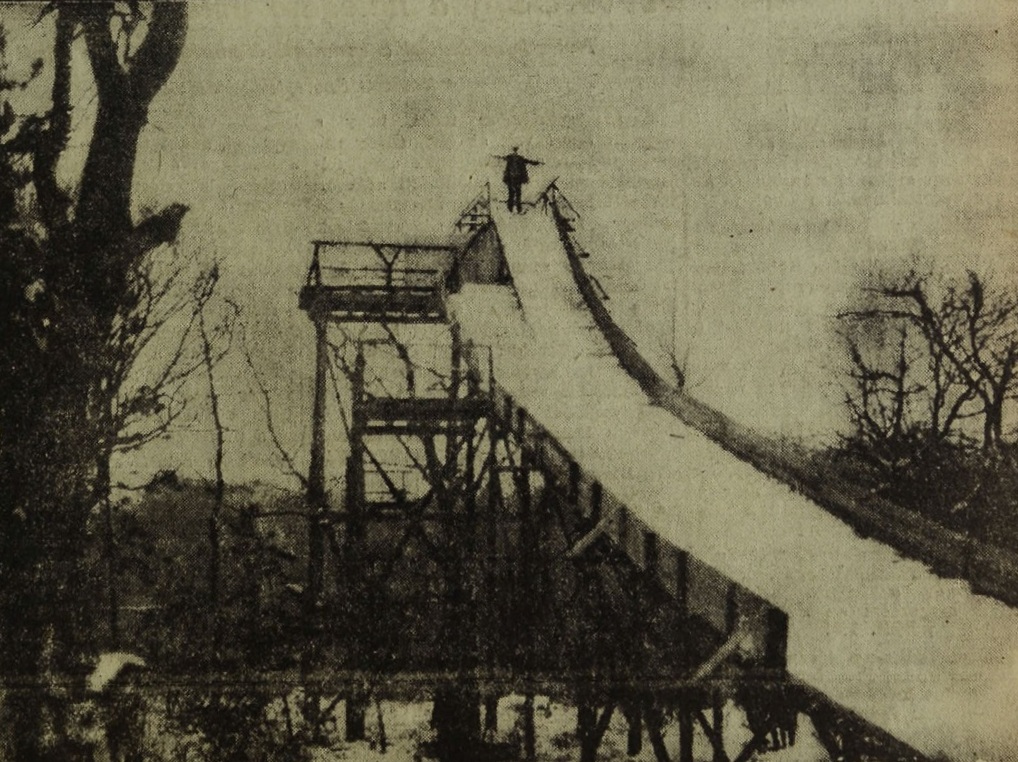
The re-built ski jump, with two starts at different heights (Photo: Nemzeti Sport, 9 December 1925)
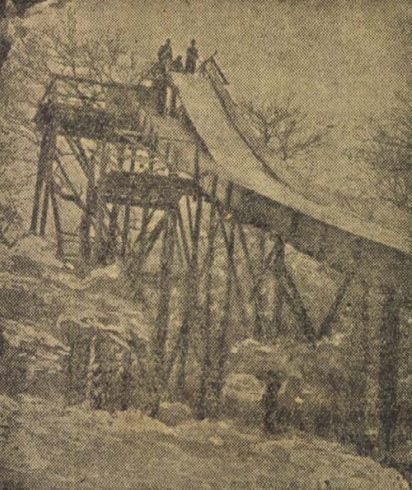
The new ski jump on Svábhegy (Photo: Pesti Hírlap, 20 December 1925)
More lively skiing competitions followed in the Buda Hills. Béla Szepes set a record by jumping 27.5 metres in the 1928-29 season. The damage that the ski jump had sustained over the years meant that in 1929 repairs were needed once again, so a smaller one for training was built next to it – the KISOK ski jump (which stands for Középiskolai Sportkörök Országos Központja or National Middle-School Sports Centre). Children and adolescents practised and competed on it.
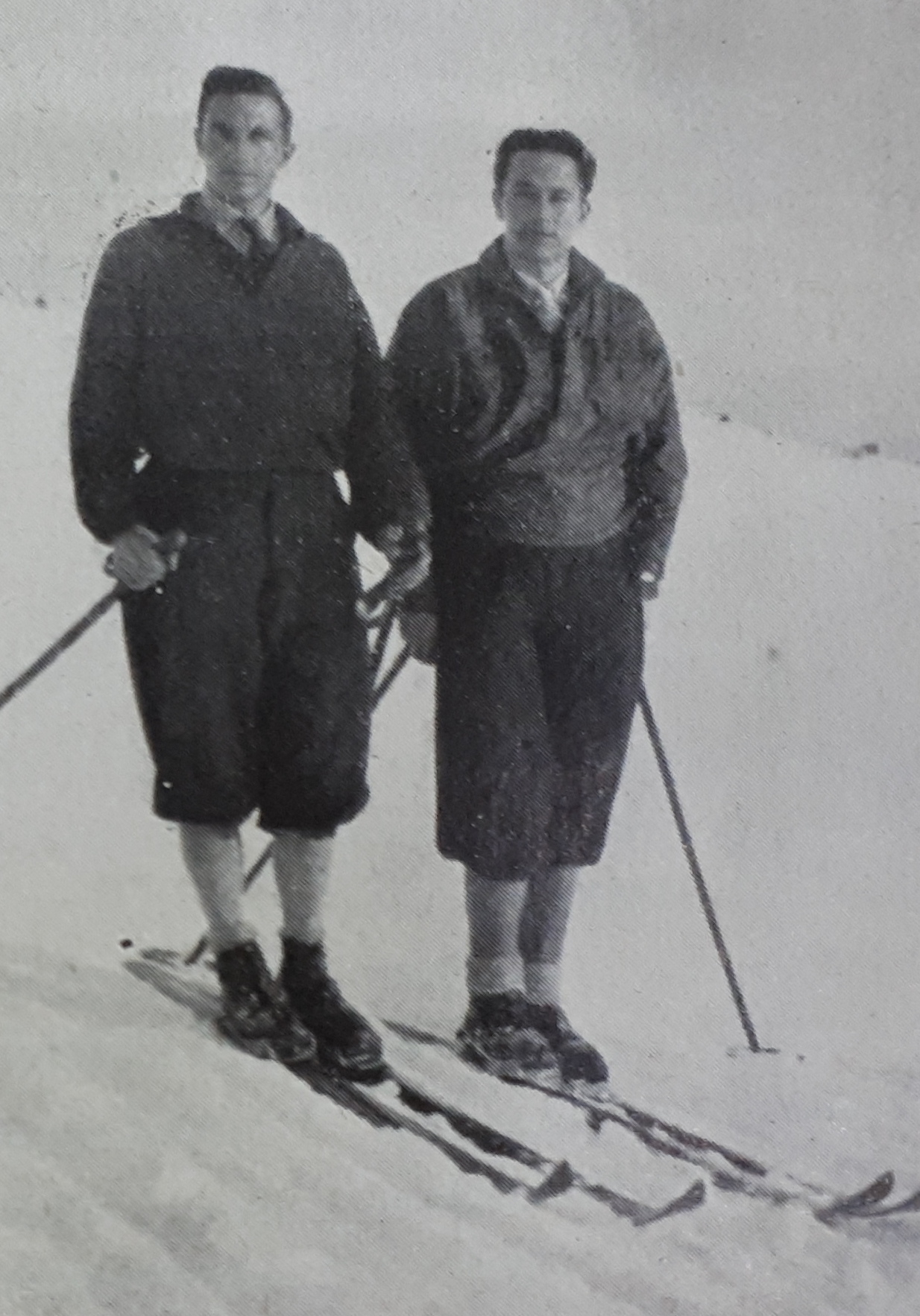
Two champion brothers, Gyula Szepes (1931) and Béla Szepes (1924; 1928-30) (Photo: Magyar Sísport 1913-1933)
It was not long before the new large ski jump was ready. In 1932, on the spot where the old wooden ramp had once stood, rose a great iron structure with an approach run, just like ski jumps in other countries. At its opening ceremony in 1933, famous Norwegian ski jumpers broke course records. The amazing spectacle included a paired jump, delighting the many thousands of Hungarian spectators.
“A paired jump is a familiar sight in foreign lands, but now this is the first one here. The old ski jump was too narrow for it. The two young Norwegians jumped and then trudged back up. They took some time to prepare. The crowd shouted up to them that there was room for a paired jump. Ruud called back from the tower that the jump was too narrow. But then, like good little children holding hands, they set off together. They let go of each other’s hands only metres before taking off and they landed together at around 36 metres!” – so Nemzeti Sport reported on the great event on 2 February 1933.

Sigmund Ruud’s 37.5 metre record jump at the opening of the new ski jump (Photo: Magyar Sísport 1934, page 321)
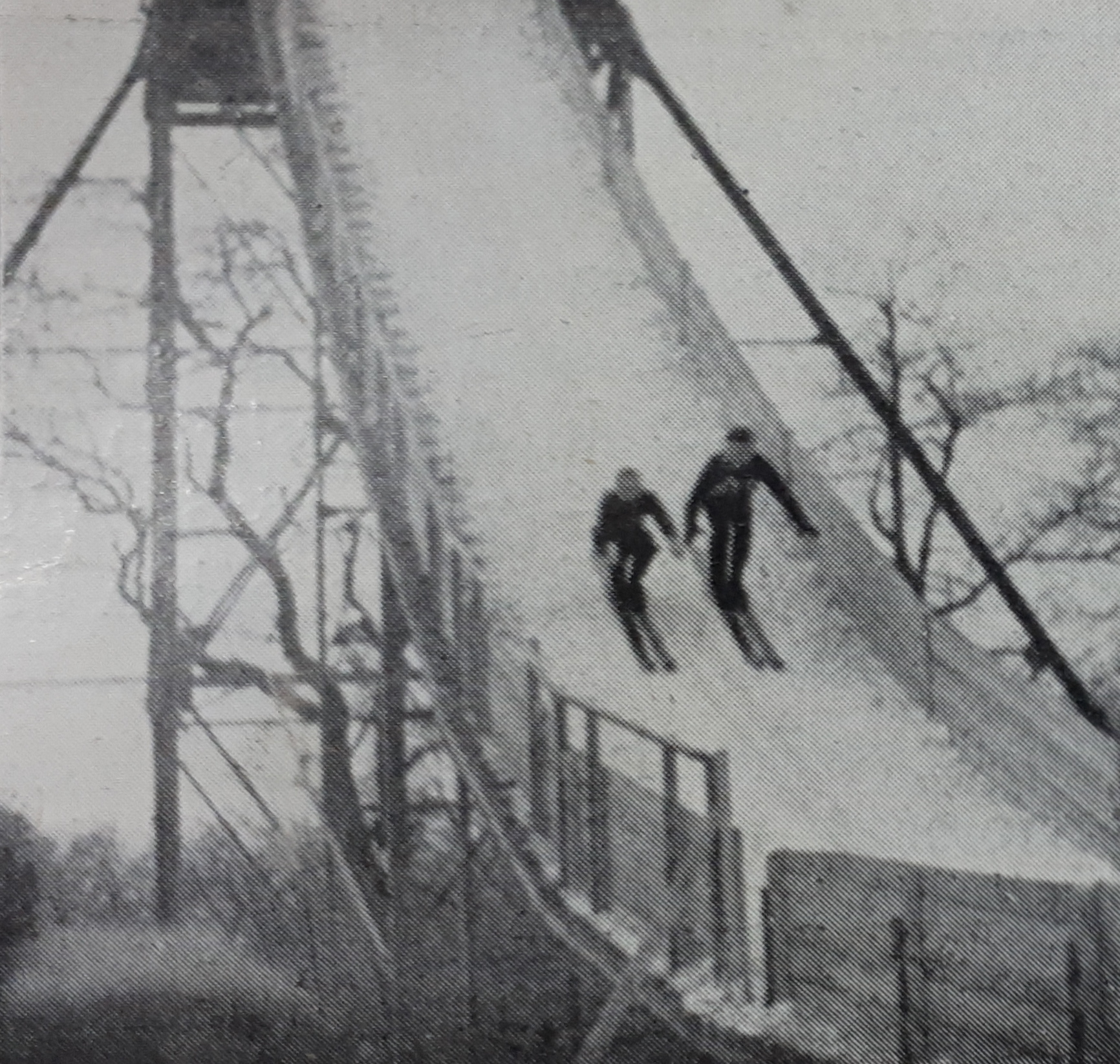
Sigmund Ruud and Kaare Traeffen make a paired jump at Svábhegy in February 1933 (Photo: Magyar Sísport 1913-1933)
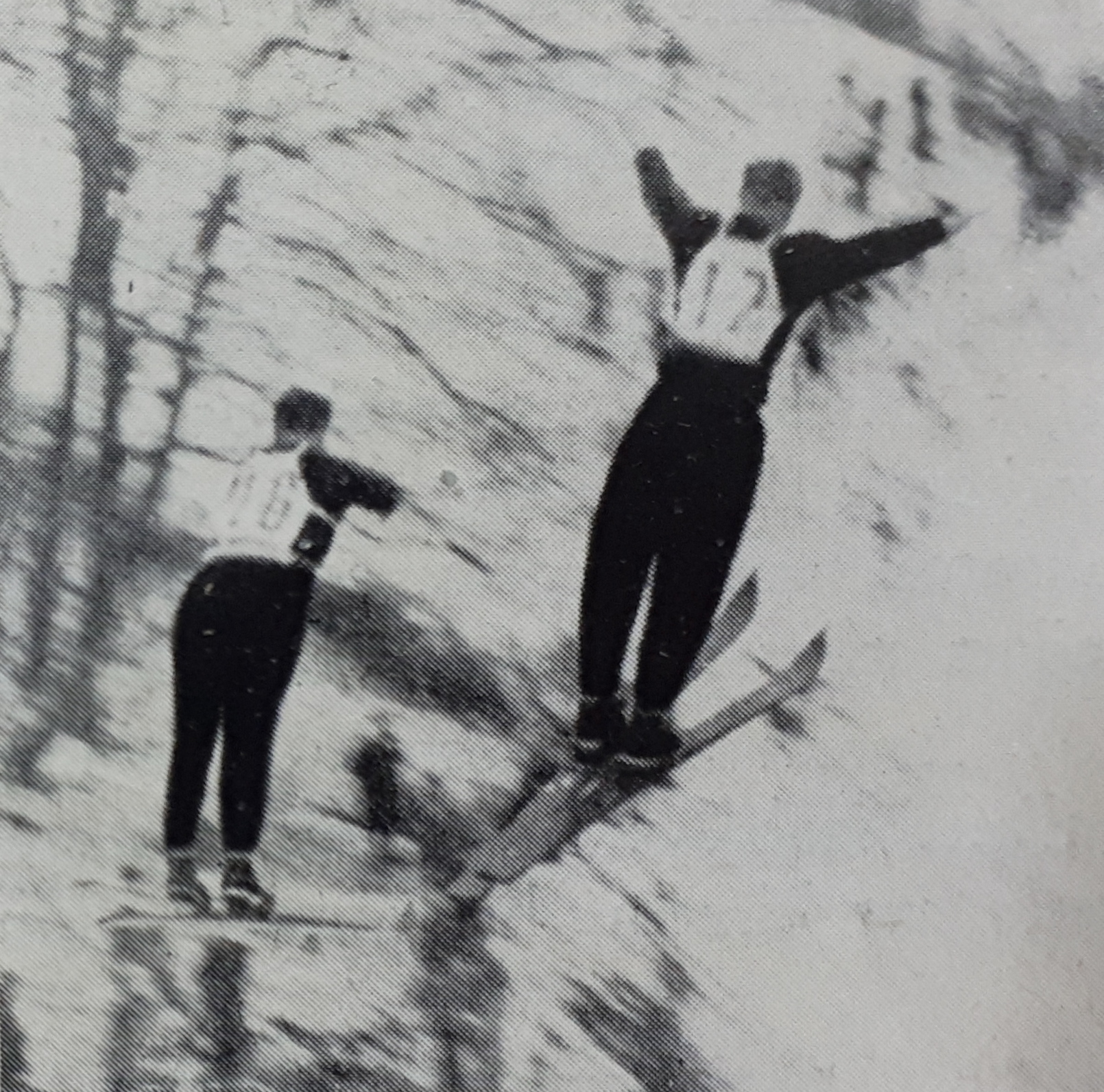
Sigmund Ruud and Kaare Traeffen make a paired jump at Svábhegy in February 1933 (Photo: Magyar Sísport 1913-1933)
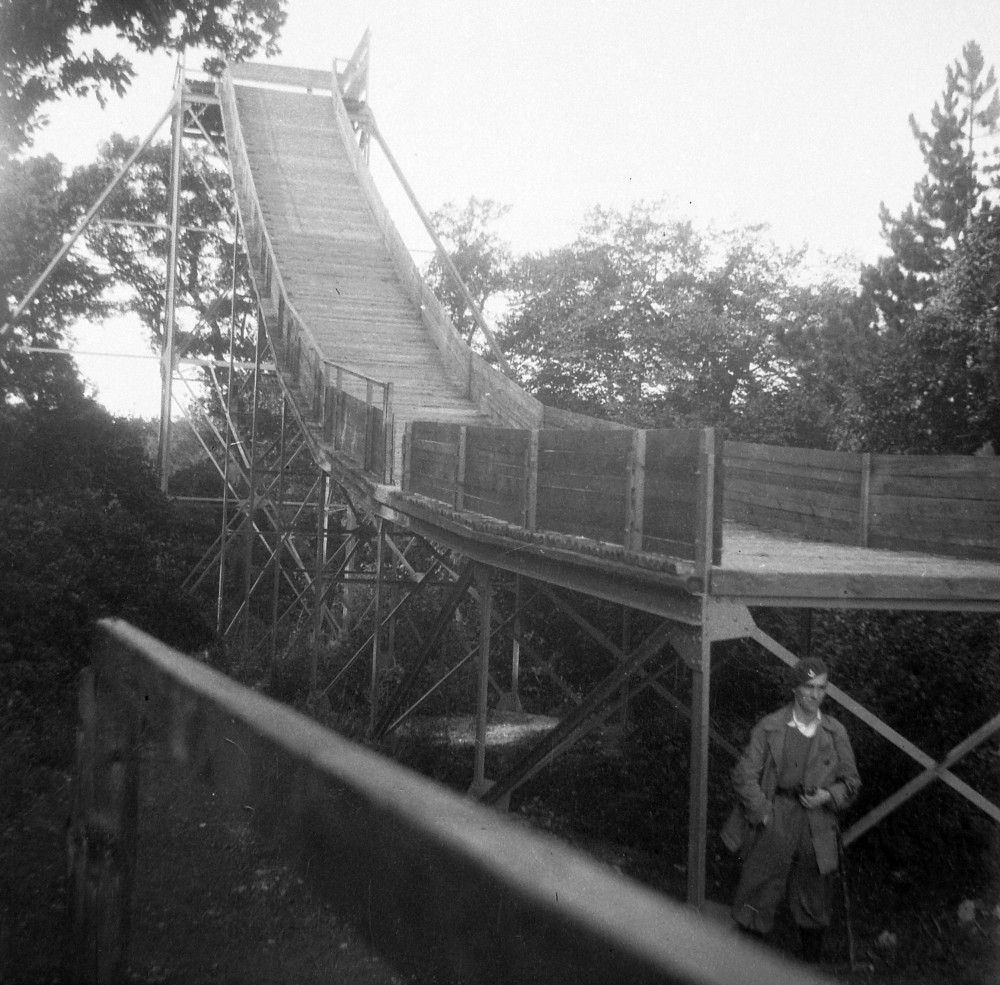
The new metal-frame ski jump in 1936 (Photo: Fortepan)
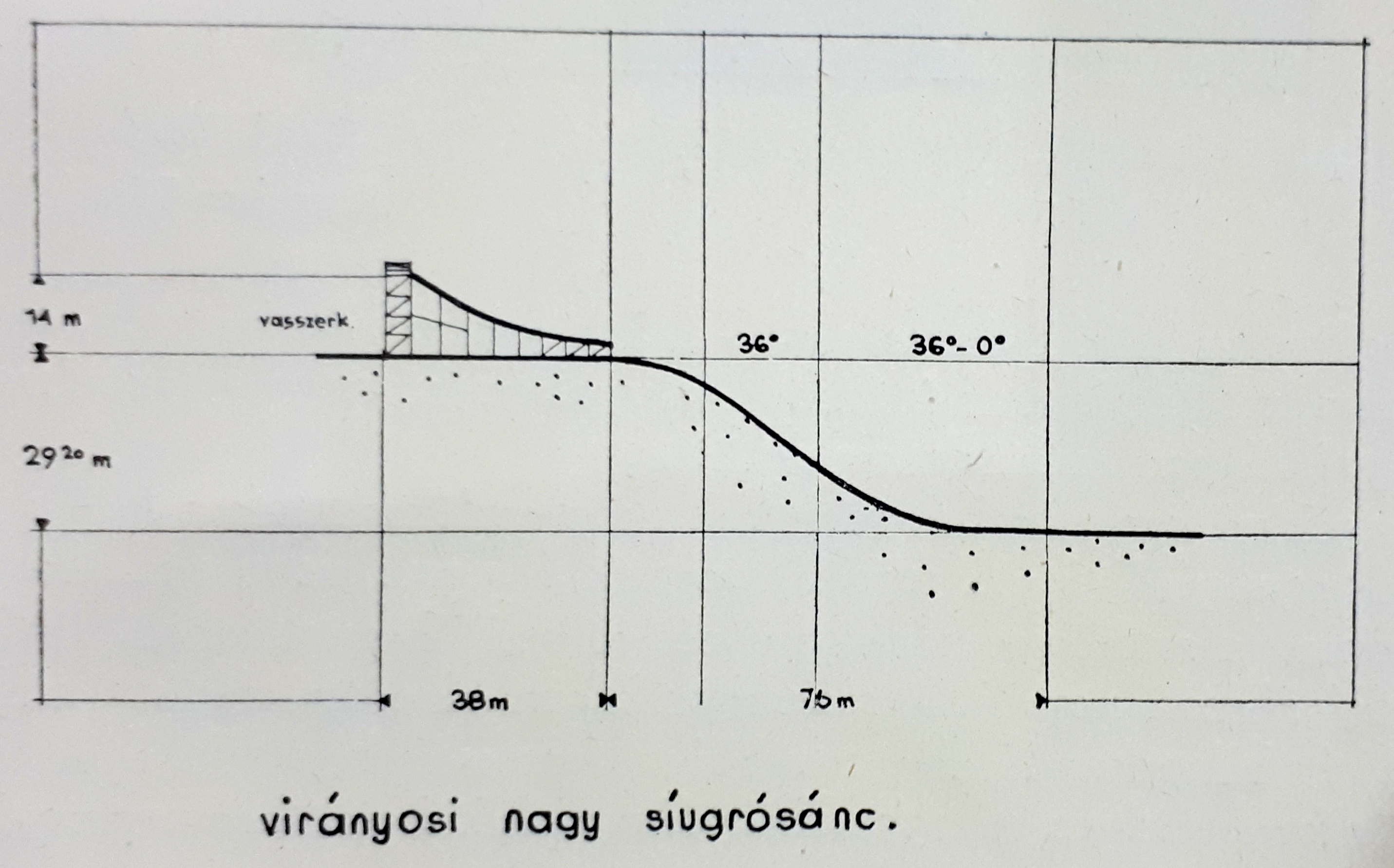
A profile of the new iron-frame ski jump built in 1932 (Photo: Magyar Sísport 1913-1933, page 98)
In 1938 a new ski jump was built on the slope between the big and small ski jumps. This was a medium-sized training jump which represented a stepping stone for those who could jump 5 to 10 metres on the small jump, but were not able to make 25 to 35 metre jumps on the big one. In 1941 the big ski jump was re-built, and in 1950 a new medium-sized jump called Rideg Ski jump was opened next to the big one.
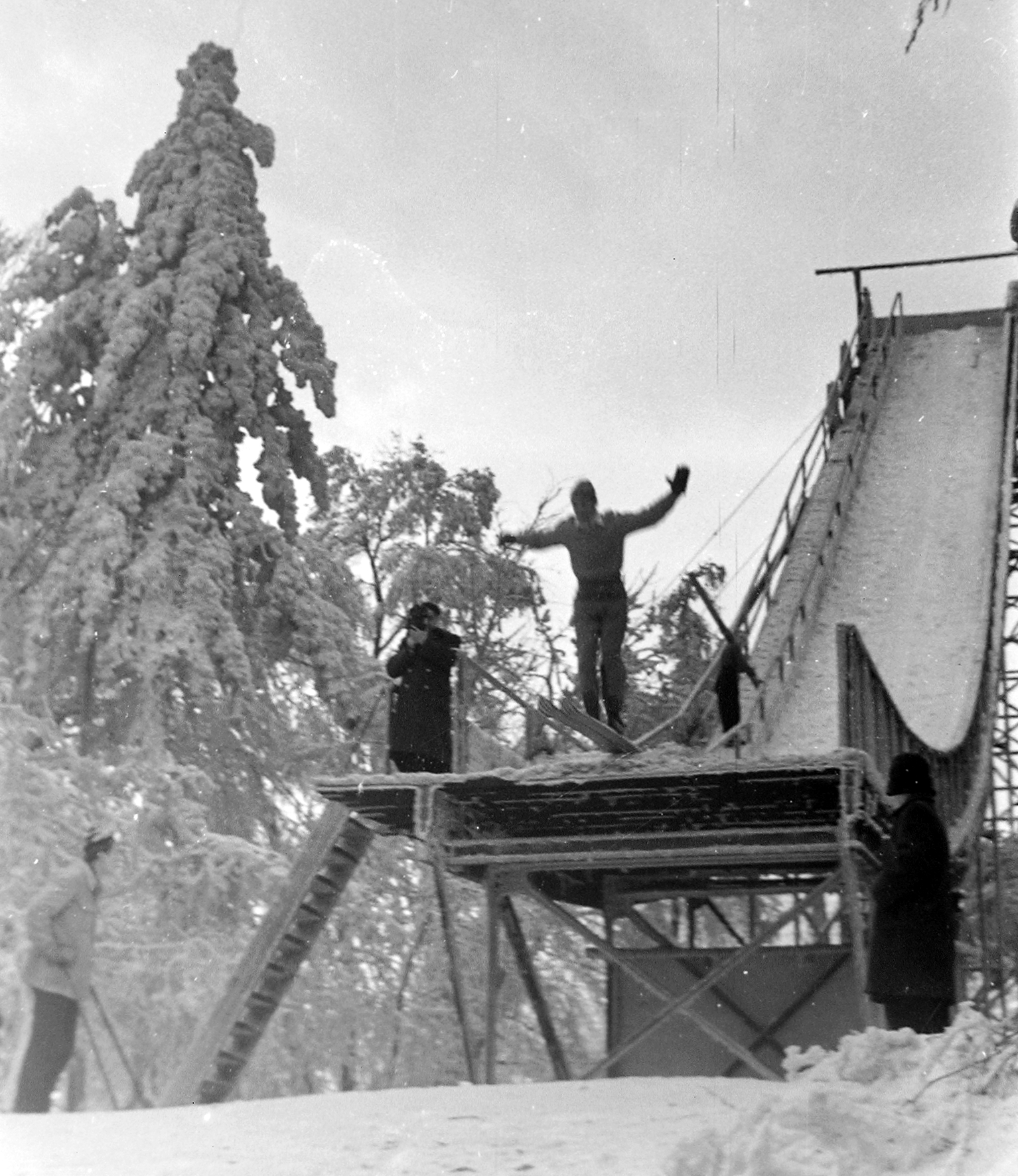
Svábhegy ski jump in 1954 (Photo: Fortepan)
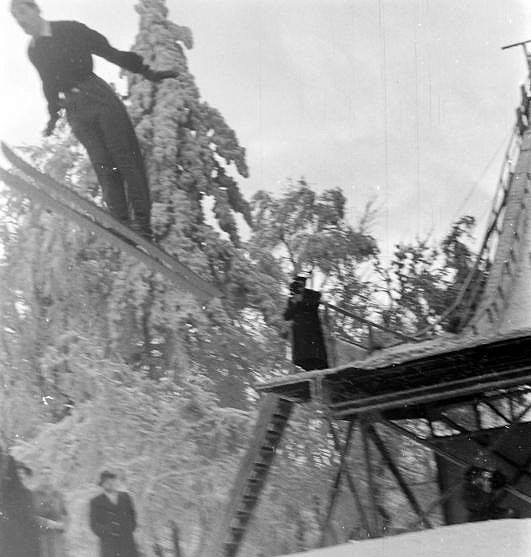
Svábhegy ski jump in 1954 (Photo: Fortepan)
In 1958 the sport witnessed another spectacle. The ski jump was transformed so that even when there was no snow it would become an artificial ski jump, allowing skiers the use course in both summer and winter.
“PVC. This isn’t the name of a club, but the plastic which covers the Svábhegy ski jump. It is surrounded by a picturesque scene, with yellow and red autumn leaves among the verdant branches. Our best skiers dare to use the ski jump as the sun shines brightly.” – Magyar Nemzet (Hungarian Nation), 30 September 1958.
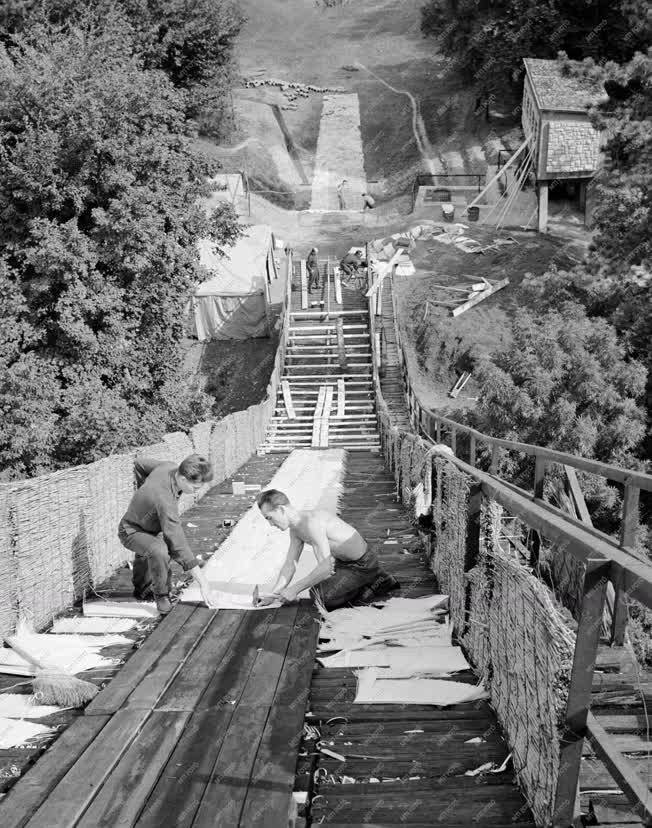
The big ski jump covered with plastic, in 1958 (Photo: MTVA Archive)
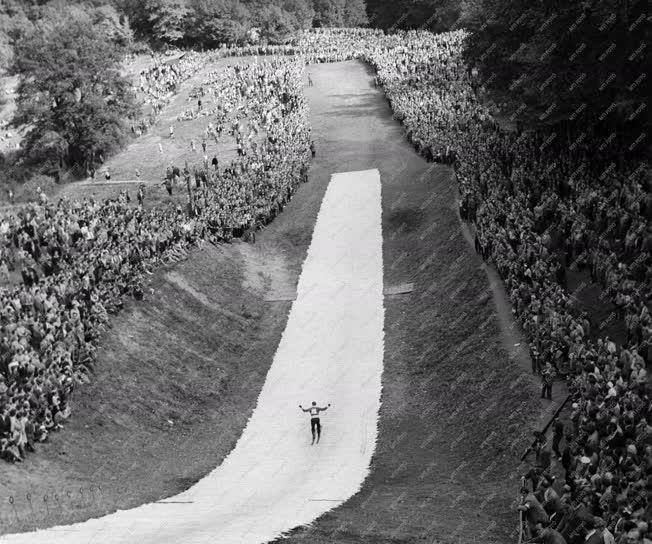
A great crowd watches the first jumps on the new plastic course (Photo: MTVA Archive)
“Ten thousand curious onlookers in raincoats and jackets watch as Csávás, the 1958 champion, ‘flies’ over the field at the end of September.” reported Képes Sport (Illustrated Sport) on 30 September 1958.
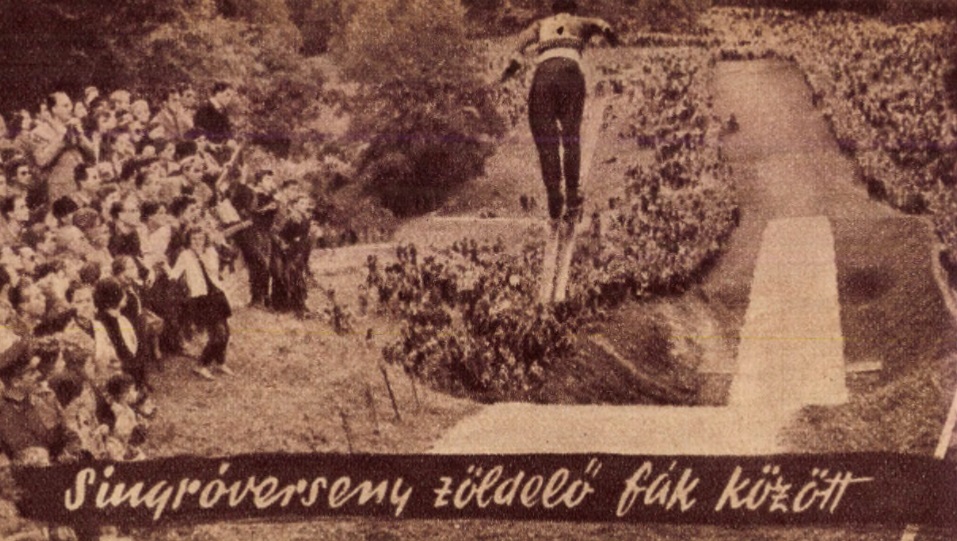
Inaugural jump (Photo: Képes Sport, 30 September 1958)
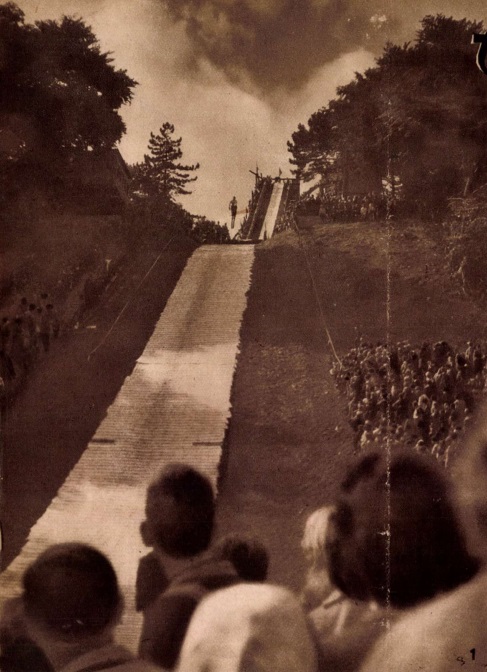
The Jánoshegy plastic ski jump is inaugurated (Photo: A Természetjárás – Turista Magazin, 1 October 1958)
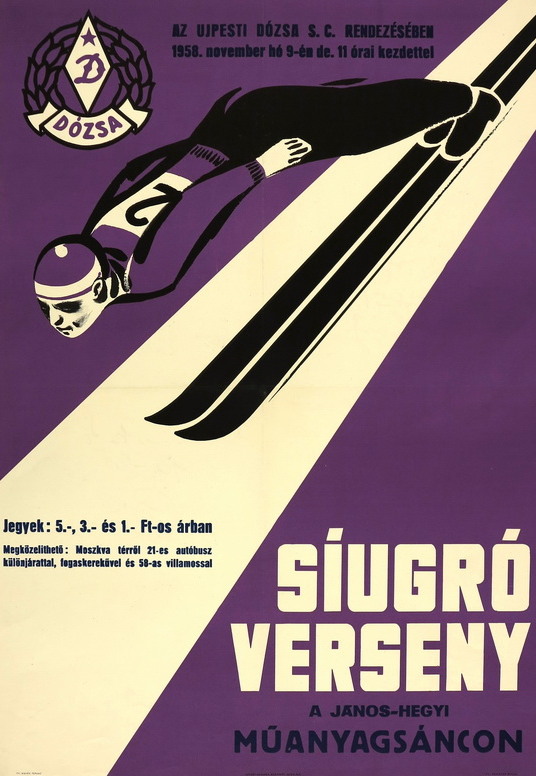
Poster for the 1958 ski jumping competition
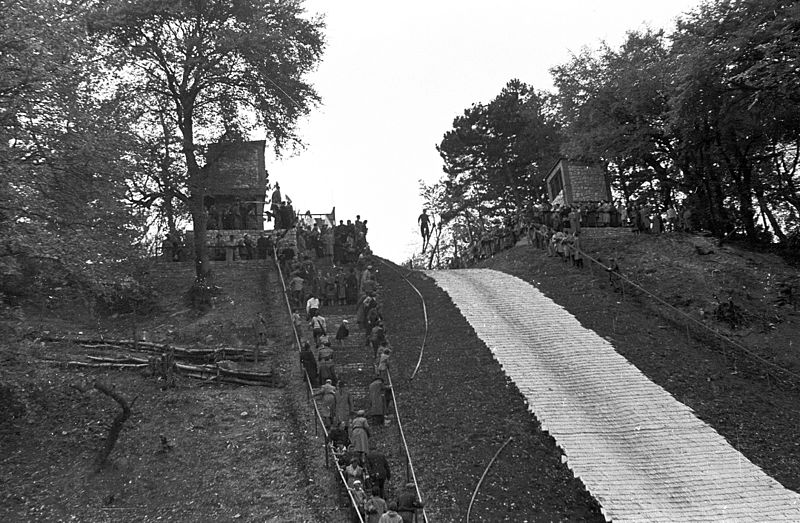
The big ski jump, adapted for the summer, in 1958 (Photo: Fortepan)
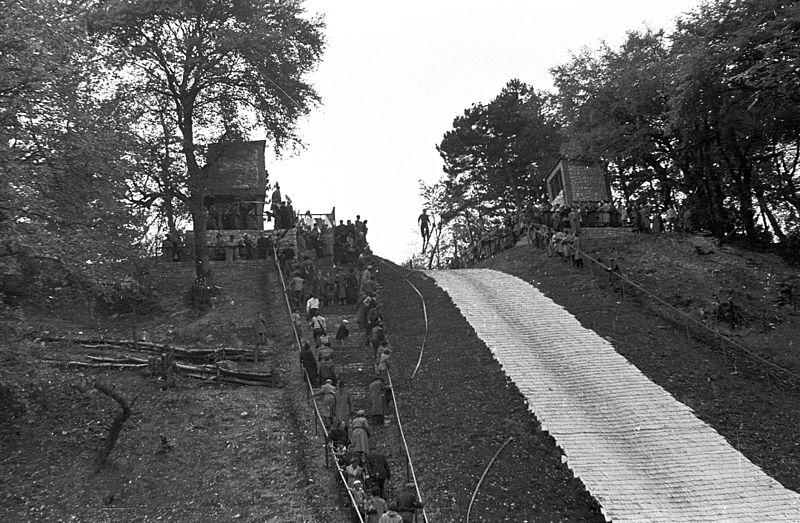
The plastic landing area and the stands on either side (Photo: Fortepan)
The last significant competition was held in Normafa in 1971. It was an international competition held only on the plastic covered course. Gyula Szilágyi, wearing the MOM colours, won with 40 and 40.5 metre jumps.
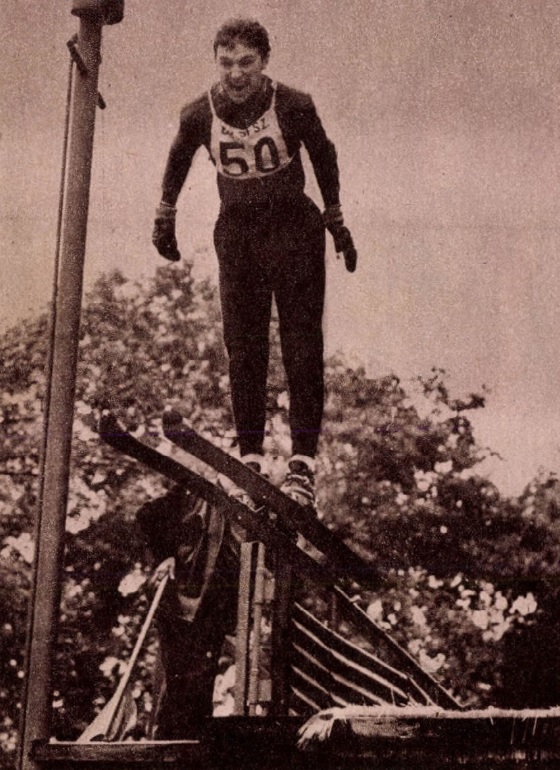
Gyula Szilágyi’s winning jump in 1971 (Photo: Képes Sport, 14 September 1971)
Electric lighting was installed along the edge of Kis-Norma in 1971, allowing the course to be used at night as well. A 250 metre long ski lift was also built, after which more smaller ski lifts were built nearby, all the while the condition of the ski jumps steady declined, and by the early 1990s there was no more ski jumping in the Buda Hills.
The Sport Hotel remained open, while many other areas became overgrown as the forest returned. On the slope below the big ski jump a children’s skiing school also continued to operate. Thanks to recent developments in Normafa, skiing will certainly become more popular again in the years to come, but it will probably never be the source of pride that it once was for Budapest.
Cover picture: The big ski jump adapted for the summer, in 1958 (Photo: Fortepan)
Source: http://pestbuda.hu/nyomtatas/20191226_foldvary_gergely_100_ev_avattak_fel_az_elso_budapesti_ugrosancot_a_magyar_gronlandon


